Common Roofing Problems and How to Fix Them
Maintaining a robust and reliable roof is essential for safeguarding your home against the elements. Over time, various issues can compromise the integrity of your roofing system, leading to potential damage and costly repairs. This comprehensive guide explores common roofing problems and provides practical solutions to address them effectively.
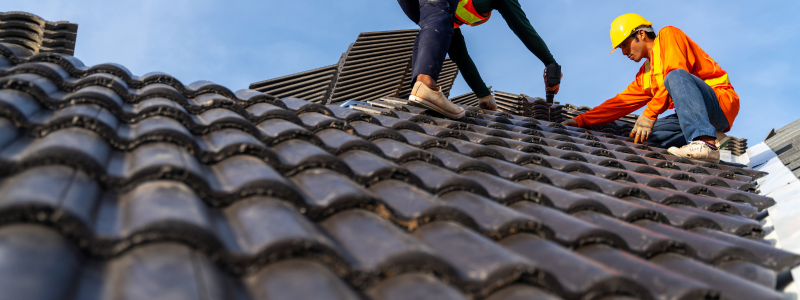
How to Fix Common Roofing Problems
When it comes to roof maintenance, identifying common roofing problems is crucial for protecting your home. Addressing roofing problems quickly after they are discovered is essential to prevent minor issues from escalating into significant repairs. Regular inspections and maintenance are vital to addressing issues before they turn into costly repairs. From leaks to damaged shingles, understanding how to tackle these common roofing problems can save homeowners time and money while ensuring the integrity of their roofs.
By understanding these issues, you can enhance the resilience and longevity of your roof while ensuring a safe and comfortable living environment.
How To Fix Leaky Roofs
Leaky roofs are a prevalent problem for homeowners, compromising a home’s integrity. Damaged shingles typically cause them, cracked flashing, or clogged gutters; harsh weather conditions can exacerbate these vulnerabilities. Telltale signs such as water stains on ceilings, damp walls, or mold growth indicate moisture infiltration, which, if not addressed swiftly, can lead to extensive water damage. To fix a leaky roof, begin by identifying the source of the leak through a thorough inspection. Once the issue is pinpointed, replace any damaged materials and apply an appropriate roofing sealant to seal leaks effectively. For comprehensive repair and peace of mind, it’s wise to consider engaging a professional roofer like us who can provide expert emergency roofing solutions to prevent future leaks and safeguard against severe structural damage.
Damaged or Missing Shingles
Damaged or missing shingles can expose your roof to additional harm, usually from severe weather, aging, or improper installation. Signs of damage include curling, cracking, or noticeable shingle gaps. To maintain your roof’s structural integrity, it’s crucial to address these issues regularly. If you discover any problems, replace individual shingles, ensuring they are correctly aligned and sealed. Regular inspections, particularly after storms, can help you catch these problems early and maintain the protection your roof provides, ultimately preventing more extensive damage.
Clogged or Defective Gutters
Gutters play a vital role in roof drainage, and significant issues can arise when they become clogged with debris like leaves and twigs. Improper installation can also lead to overflow, impacting the roof and your home’s foundation. Signs of clogged gutters include overflowing water, sagging gutters, and pooling water around the foundation. To maintain roof health, it’s essential to regularly clean your gutters to remove debris and ensure adequate water flow, which helps prevent clogs. Installing gutter guards can enhance protection against blockages while ensuring your gutters are sloped correctly, facilitating proper drainage and reducing the risk of water pooling on the roof. Regular maintenance is crucial for ensuring that your gutters function effectively.
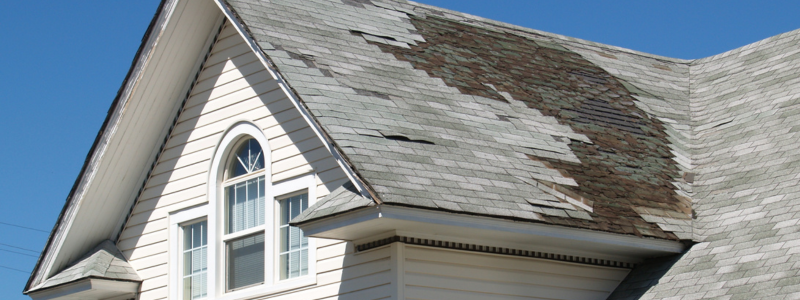
Poor Roof Ventilation
Inadequate roof ventilation can lead to many problems, including accelerated deterioration due to trapped heat and moisture in the attic, resulting in increased energy bills and premature aging. Indicators of poor ventilation include excessive attic moisture and a noticeable rise in energy costs. It is vital to address these ventilation issues by promoting adequate airflow to enhance energy efficiency and improve indoor comfort. This can be achieved by installing additional vents and removing any blockages. Consulting with roofing professionals can assist in designing an optimal ventilation system tailored to your specific roofing needs, ultimately prolonging the life of your roof and improving energy efficiency.
Flashing Failures
Flashing is the critical material that seals joints and prevents water intrusion; improper installation, weathering, and corrosion can compromise effectiveness. Damaged flashing often leads to leaks around structures like chimneys, skylights, and vents, making regular roof inspections essential for identifying these problems early and avoiding further structural damage. If you notice any damaged flashing, it’s crucial to repair or replace it immediately, ensuring proper sealing and installation techniques are used. Regularly inspecting your flashing can identify issues early and prevent water damage.
Ponding Water
Ponding water on your roof, exceptionally flat roofs, can lead to severe consequences due to causes such as improper roof slopes or clogged drains that hinder adequate water drainage. Standing water after rainfall is a significant indicator of this issue, making it essential to address drainage problems promptly to prevent long-term damage and maintain your roof’s integrity. To improve roof drainage, consider adding tapered insulation or installing additional drains, and ensure regular maintenance of these drains to keep them unclogged and avoid water accumulation.
Shrinkage of Roofing Materials
Aging roofing materials can shrink, leading to cracks, tears, and ridges in the roof membrane, jeopardizing the roof’s ability to prevent waterproofing. If you notice visible cracks or tears, it’s essential to conduct regular maintenance to catch these issues before they worsen, ensuring your roof remains a stable barrier against the elements. Roof shrinkage can compromise your roof’s integrity, so promptly inspecting any affected areas is vital. In cases of extensive damage, you may need to replace parts of the roof to restore its structure, and engaging a professional can ensure a thorough assessment and proper repair solutions.
Tree Damage
Overhanging tree branches and falling limbs can cause significant damage to your roof, damage puncturing shingles, and create potential leaks, making it essential to inspect trees near your home to mitigate this risk regularly. Signs of tree damage include visible punctures in shingles and debris accumulation on the roof. Maintaining a safe distance between trees and your roof and regularly trimming overhanging branches can prevent many tree-related roofing issues. Consistent maintenance of surrounding vegetation helps guard against physical damage and ensures the longevity and effectiveness of your roof, safeguarding your home for years to come.

Why Choose B&M Roofing for Your Roofing Needs?
Regarding your roofing needs, choosing B&M Roofing means selecting a company with a proven track record of quality craftsmanship and customer satisfaction. With a team of experienced professionals, B&M Roofing utilizes only the best materials to ensure your roof is durable and built to last. Their commitment to timely and efficient service helps minimize disruptions to your daily life while providing reliable solutions for roofing issues. Additionally, B&M Roofing offers comprehensive warranties, giving you peace of mind knowing that your investment is protected for years to come.
Expertise and Experience
B&M Roofing has been providing high-quality roofing services since 1947. Our team has decades of expertise in identifying and resolving roofing issues, ensuring your home remains protected. We pride ourselves on using the finest materials and the latest techniques to deliver lasting results that enhance the value and safety of your property. Check out our portfolios of previous roofing work.
Comprehensive Services
Whether you need routine maintenance, minor repairs, or a complete roof replacement, B&M Roofing offers tailored roofing solutions. Our experienced team is dedicated to ensuring your roofing needs are met with the highest standards of quality and craftsmanship. We understand each project is unique, so we work closely with our clients to develop custom plans that fit their specific requirements and budget. We offer a range of roofing services to meet the needs of both residential and commercial properties, ensuring robust solutions for every type of building.
Customer-Centric Approach
At B&M Roofing, customer satisfaction is our top priority. We work closely with homeowners to provide reliable and transparent services and keep their roofs in optimal condition. Our team is dedicated to addressing concerns and ensuring each project is completed to the highest standards.

Get Started With B&M Roofing Services Today
Your roof is one of the most critical components of your home, protecting it from weather elements and maintaining its structural integrity. Awareness of common roofing problems and addressing them promptly can save you from costly repairs and ensure your home remains safe and secure.
Trust B&M Roofing to provide expert guidance, thorough inspections, and top-quality repair services. Contact us today to schedule an inspection and keep your roof in its best condition for years.
The Importance of Roof Replacement After a Hail Storm
Hail storms are common in Colorado, leaving homeowners with significant roof damage. Addressing this damage promptly is crucial to maintaining the integrity of your home. This article delves into the importance of roof replacement after a hail storm, guiding you through assessment, decision-making, and the benefits of timely action.
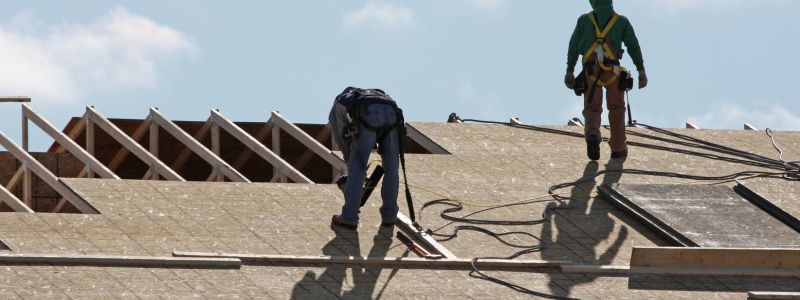
Understanding Hail Damage to Roofs
Hailstones vary in size, and even smaller ones can cause substantial damage to roofing materials. The impact can lead to dents, cracks, and granule loss, compromising the roof’s protective capabilities. Over time, this damage can result in leaks and structural issues.
Assessing Roof Damage After a Hail Storm
Assessing roof damage after a hail storm is a critical step for homeowners to ensure the safety and longevity of their property. Begin by examining the perimeter of your home for any visible signs of damage, such as dents on gutters and downspouts, which may indicate that the roof has also been affected. Pay close attention to shingles, checking for cracks, missing pieces, or granule loss. Documenting any findings with photographs for future reference is essential, especially if you plan to file an insurance claim. However, hiring a professional roofing contractor, like B&M Roofing, is necessary to get a comprehensive evaluation, as they can detect hidden damages and provide expert advice on the required repairs or replacements.
Immediate Steps for Homeowners
After a hail storm, inspecting your property for visible signs of damage is essential. Look for dents in gutters, downspouts, and siding, indicating potential roof damage. However, avoid climbing onto the roof, as it can be hazardous. If you notice any signs of damage, it’s wise to contact a professional. B&M Roofing specializes in emergency roof assessments and repairs, ensuring your roof is safe and secure. We can thoroughly inspect and guide you on the necessary steps to restore your property to its original condition. Don’t wait too long; promptly addressing potential issues can prevent more extensive damage.
Importance of Professional Roof Inspections
Engaging a professional roofing contractor is vital for a thorough assessment. Experts can identify both apparent and hidden damages that untrained eyes might miss. For instance, granule loss on shingles may not be immediately visible but can lead to premature roof aging.
Consequences of Ignoring Hail Damage
Neglecting hail-induced damage can have severe repercussions. Minor issues can escalate into significant problems, such as water infiltration, mold growth, and structural deterioration. Addressing damage right away can prevent costly repairs in the future.
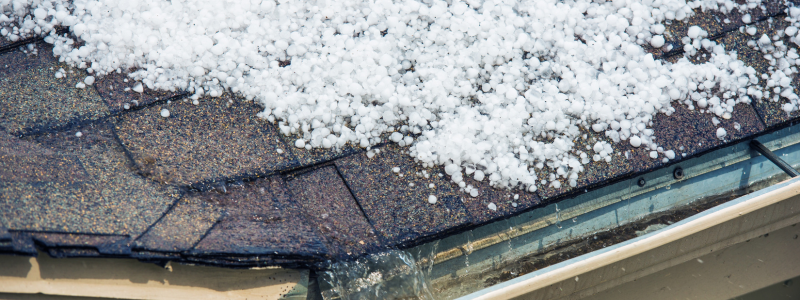
Roof Repair vs. Roof Replacement: Making the Right Decision
When deciding between roof repair and replacement, the extent of the damage is a significant factor. If there are widespread issues, such as multiple leaks or structural weaknesses, opting for a complete replacement may be the best course of action to avoid recurring problems. Additionally, consider the age of your roof; an older roof nearing the end of its lifespan may not justify the cost of repairs. Consulting with a professional roofing contractor like us can provide valuable insights, ensuring you make an informed decision that protects your home in the long run. Additionally, B&M Roofing’s team of experienced roofing professionals work on all types of roofs, from residential properties to commercial businesses, depending on what you need.
Factors Influencing the Decision
Determining whether to repair or replace your roof depends on several factors:
- The Extent of Damage: Widespread damage across the roof often necessitates a total replacement.
- Age of the Roof: Older roofs nearing the end of their lifespan may benefit more from replacement.
- Roofing Material: Some materials are more susceptible to damage and may require replacement sooner.
Benefits of Timely Roof Replacement
Timely roof replacements offer several significant benefits for homeowners. First and foremost, they provide enhanced protection against the elements, safeguarding your home from potential leaks and structural damage. Additionally, a new roof can improve energy efficiency, reducing utility bills with better insulation and ventilation. Lastly, investing in a fresh roof can increase your property’s market value and curb appeal, making it a wise long-term investment for comfort and resale potential.
Enhanced Protection
A new roof protects your home against weather events like heavy rain, snow, and strong winds. Modern materials and construction techniques ensure durability and longevity, keeping your home safe and secure. Investing in a new roof not only shields your property from potential damage but also adds value and peace of mind for years to come.
Improved Energy Efficiency
Modern roofing materials can enhance insulation, leading to better energy efficiency and potential savings on utility bills. Professional contractors like B&M Roofing have access to and knowledge of top-of-the-line energy-saving materials.
Increased Property Value
A well-maintained roof enhances your property’s curb appeal and protects against the elements. By investing in regular upkeep and repairs, homeowners can prevent costly damage while increasing their property’s market value. A visually appealing roof can attract potential buyers, making your home stand out in a competitive real estate market.

Benefits of Consulting with Roofing Professionals
A qualified roofing contractor can provide insights into the best course of action. They can assess the damage, consider the roof’s age and material, and recommend repair or replacement. Get in touch with our expert team to get started!
Choosing the Right Roofing Materials
Choosing the suitable roofing material for your home is essential, as it can significantly impact durability, energy efficiency, and overall aesthetics. B&M Roofing specializes in helping homeowners navigate this decision, offering expert advice on various materials that suit your needs and budget. Our extensive knowledge and experience ensure that you select a roofing option that enhances your home’s appearance and meets the demands of your local climate. You can trust our expert team to guide you through this significant investment for your property.
- Impact-Resistant Options: In hail-prone areas like Colorado, selecting impact-resistant materials is crucial. Class 4 impact-resistant shingles, for example, are designed to withstand severe hail damage.
- Longevity and Durability: Opting for durable materials ensures a longer lifespan for your roof, providing peace of mind for years.
B&M Roofing’s Expertise in Roof Repair & Replacement
Since 1947, B&M Roofing has been committed to delivering quality roofing services across Northern Colorado and nearby states. Whether you need a new roof for your home or office or require repair services, our team has the extensive knowledge and experience to meet your needs. Check out our extensive portfolio of previous roofing work.
- Documenting the Damage: Thorough documentation, including photographs and detailed notes, is essential when filing an insurance claim.
- Working with Insurance Adjusters: Collaborate closely with your insurance adjuster to ensure all damages are accounted for and to facilitate a smooth claims process.
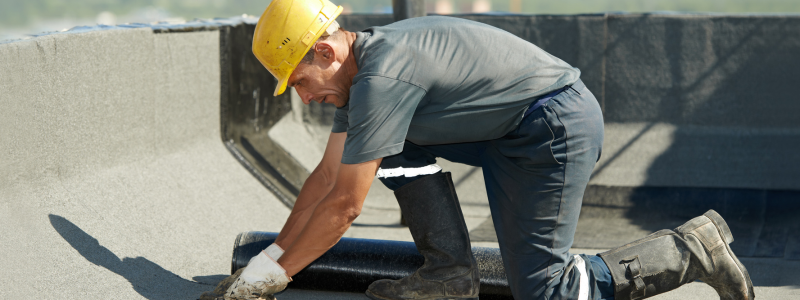
Get Started With B&M Roofing Today
Addressing roof damage promptly after a hail storm is vital to maintaining your home’s integrity. You can protect your property and enhance its value by choosing timely roof replacement and appropriate materials.
Trust B&M Roofing to provide expert guidance and quality service for all your roofing needs. Contact us today to get started with your roofing services!
How to Hire a Roofing Contractor
When it comes to your roof, hiring the right contractor is crucial. Your roof is one of the most essential parts of your home, protecting you from the elements and ensuring your home’s structural integrity. But how do you choose the right professional for the job? This guide will walk you through how to hire a roofing contractor, ensuring you find a reliable, experienced, and trustworthy expert to handle your roofing needs.
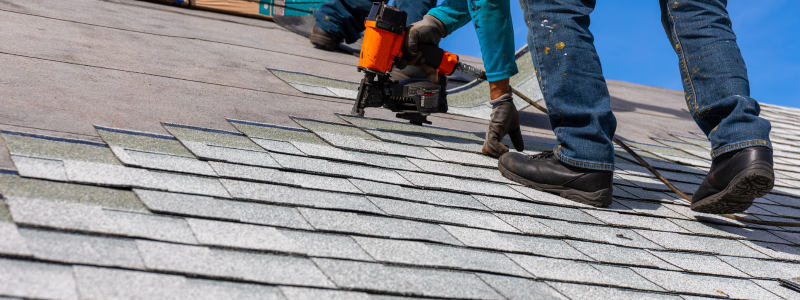
The Importance of Hiring a Licensed Roofing Contractor
Before diving into the hiring process, it’s essential to understand the significance of working with a licensed roofing contractor. A licensed contractor has met state training, experience, and safety standards requirements. This licensing ensures you work with someone knowledgeable about the best roofing practices and local building codes.
Why It Matters:
- Safety: A licensed contractor will follow safety protocols, reducing the risk of accidents during the job.
- Quality Assurance: Licensed contractors are more likely to provide high-quality work, protecting your investment.
- Insurance Coverage: In case of any mishaps, their insurance will cover damages or injuries, giving you peace of mind.
Where to Start: Researching Roofing Contractors
The first step in the process of how to hire a roofing contractor is research. Here are some practical ways to find qualified contractors:
- Ask for Referrals: Word-of-mouth recommendations from friends, family, or neighbors can lead you to trustworthy contractors with a proven track record.
- Online Research: To assess the contractor’s reputation, check online reviews and ratings on platforms like Google, Yelp, or the Better Business Bureau (BBB).
- Industry Associations: Utilize professional organizations such as the National Roofing Contractors Association (NRCA), which can connect you with vetted roofing professionals in your area.
These steps will help you create a shortlist of contractors worth considering.

Key Questions to Ask a Roofing Contractor
Once you’ve identified potential contractors, it’s time to ask the right questions to ensure you’re hiring the best roofing contractor for your project. Consider asking:
- Are you licensed and insured?
- How long have you been in business?
- Can you provide references or a portfolio of past work?
- What is your warranty on materials and craftsmanship?
- How do you handle unexpected repairs or additional work?
These questions help gauge the contractor’s experience and reliability. Discussing payment schedules, project timelines, and how the contractor will handle any unexpected complications during the job is also essential.
Verifying Credentials and Experience
After gathering information through your questions, it’s time to verify the contractor’s credentials and experience. Here’s what to look for:
- Licensing and Insurance: Ask for proof of licensing and insurance. This includes general liability insurance and worker’s compensation insurance to protect you in case of any accidents.
- Experience: An experienced roofing contractor will have a solid track record of completed projects. Look for someone with at least 5-10 years of experience in the industry. Our expert team has been helping Colorado residents find the right roof for over 75 years.
- References: Contact previous clients for firsthand feedback on the contractor’s work quality, timeliness, and professionalism.
Verifying these credentials is critical to ensure you’re hiring a contractor who can deliver both skill and accountability.
Warning Signs of an Untrustworthy Contractor
Unfortunately, not all contractors operate with the same level of integrity. To avoid hiring a shady contractor, be on the lookout for these red flags:
- Lack of Proper Licensing or Insurance: If a contractor can’t provide proof of licensing or insurance, steer clear.
- High-Pressure Sales Tactics: Legitimate contractors won’t pressure you into making hasty decisions or demand full payment upfront.
- No References or Portfolio: Reputable contractors will gladly provide references and show off past work.
- Storm Chasers: Be wary of “storm-chasing” contractors who appear uninvited after a storm and offer to repair your roof at a “discount.”
By avoiding these warning signs, you can protect yourself from scams and ensure you hire a reliable roofing professional.
Getting Multiple Bids and Comparing Estimates
When considering how to hire a roofing contractor, one crucial step is obtaining multiple bids from different companies. Here’s why this is important:
- Competitive Pricing: Gathering several estimates ensures you’re not overpaying for your roof repair or replacement.
- Transparency: A detailed bid will break down the costs for labor, materials, permits, and any other fees, helping you understand where your money is going.
- Red Flags: Be wary of bids that are significantly lower than others. Low bids could indicate subpar materials or cutting corners on the job.
Once you have your bids, compare the price and the services included. Look for transparency, professionalism, and an accurate timeline for project completion.
Understanding Roofing Contracts and Warranties
Before signing the dotted line, ensure you thoroughly understand the roofing contract. Here’s what a comprehensive contract should include:
- Scope of Work: A detailed description of what will be done, from the materials used to the areas being repaired or replaced.
- Timeline: Clear start and end dates for the project.
- Payment Schedule: The payment plan includes any deposit required upfront and the amount due upon completion.
- Warranties: Ensure the contractor offers warranties on both materials and craft. A warranty protects against faulty materials or poor installation.
Having a clear, well-documented contract ensures that both parties have a mutual understanding of the expectations and responsibilities.
Finalizing Your Decision
Now that you’ve collected bids, verified credentials, and assessed contracts, it’s time to decide. Here are a few tips:
- Compare Estimates: Look at the overall value offered, not just the price. A higher price may come with better warranties, materials, and experience. Also, make sure the type of roof you are quoted makes sense for your home or business.
- Review the Contractor’s Reputation: Double-check reviews, references, and past projects to ensure consistency in quality and service.
- Make an Informed Choice: Choose the contractor with the best experience, transparency, and reliability.
For a trusted, experienced, and fully licensed roofing contractor, consider B&M Roofing for your next roofing project. Our commitment to quality, safety, and customer satisfaction ensures you’ll have a roof that stands the test of time.
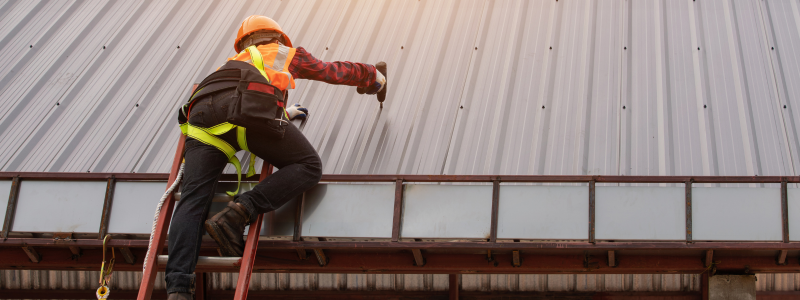
Hiring A Roofing Service Contractor
Hiring a roofing contractor can be manageable. Following the above steps, you can confidently select a qualified professional to handle your roofing project. From verifying credentials to comparing bids and understanding contracts, these best practices will ensure you hire the best roofing contractor for your needs.
Ready to get started? Contact B&M Roofing today for a consultation with our expert team.
Roofing Contractor in Denver
Maintaining a sturdy and reliable roof is crucial for protecting your home or business from the elements, especially in a place like Denver, Colorado, where the weather can be unpredictable and harsh. That’s why it’s essential to ensure it’s always in top condition. When it comes to roofing repairs and maintenance, finding a trustworthy and experienced roofing contractor in Denver can make all the difference. B&M Roofing Services has been a cornerstone in the Denver roofing industry, offering top-notch services to both residential and commercial clients. With a reputation for quality work and exceptional customer service, they are the go-to choice for anyone looking to keep their roof in the best possible shape.
In this brief article, we’ll explore the best practices for booking a roofing contractor in Denver, highlighting the expertise provided by us at B&M Roofing. Whether you’re dealing with a minor repair or planning a complete roof replacement, understanding the process and knowing what to look for in a contractor will help you make informed decisions and ensure your roof remains strong and durable for years to come.

Why Regular Roof Maintenance is Essential
Denver poses unique challenges. The city experiences a wide range of weather conditions, from heavy snowfall and ice in the winter to intense sunlight and thunderstorms in the summer. These varying conditions can cause significant wear and tear on your roof, making regular inspections and maintenance crucial.
Importance of Regular Inspections
Regular roof inspections help identify and address minor issues before they become major problems. Small leaks, loose shingles, or minor damage can quickly escalate if left unattended, leading to costly repairs or even a full roof replacement. By scheduling regular inspections, you can catch these issues early and extend the life of your roof.
Common Roofing Issues in Denver
Denver’s climate can lead to common roofing problems, including:
- Snow and Ice Damage: Heavy snowfall can add weight to your roof, potentially causing structural damage. Ice dams can form, leading to water seepage and leaks.
- UV Damage: Intense sunlight can cause roofing materials to deteriorate, leading to cracking and fading.
- Wind Damage: Strong winds can lift and remove shingles, exposing the underlying materials to the elements.
- Hail Damage: Hailstorms are common in Denver and can cause significant damage to roofing materials, leading to leaks and structural issues.
Long-Term Benefits of Timely Repairs
Timely roof repairs not only prevent minor issues from becoming major problems but also offer several long-term benefits:
- Cost Savings: Addressing minor issues promptly can save you money by avoiding costly repairs or a full roof replacement down the line.
- Energy Efficiency: A well-maintained roof provides better insulation, reducing energy costs for heating and cooling your home.
- Increased Property Value: A sturdy, well-maintained roof enhances the overall value of your property, making it more attractive to potential buyers.
Key Factors for Choosing a Roofing Contractor
Selecting the right roofing contractor is crucial to ensuring the success and quality of your roofing project. Here are some key factors to consider when choosing a roofing contractor in Denver:
Licenses and Certifications
Ensure the roofing contractor you choose is properly licensed and certified to operate in Colorado. This guarantees that they meet the necessary state regulations and standards. Certified contractors are more likely to adhere to industry best practices and provide high-quality work.
Experience with Denver-Specific Roofing Challenges
Denver’s unique climate requires specialized knowledge and experience. Choose a contractor with a proven track record of handling Denver’s weather-related roofing issues, such as heavy snowfall, hail, and intense UV exposure. Experienced contractors will know the best materials and techniques to use for long-lasting results.
Customer Reviews and Testimonials
Research the contractor’s reputation by reading customer reviews and testimonials. Look for feedback on their professionalism, quality of work, timeliness, and customer service. Positive reviews and high ratings are indicators of a reliable contractor. Additionally, ask the contractor for references from previous clients and follow up with them to get firsthand accounts of their experiences.
Warranty and Insurance Considerations
A reputable roofing contractor should offer warranties on both their workmanship and the materials they use. This ensures that you’re protected against any defects or issues that may arise after the project is completed. Additionally, verify that the contractor has adequate insurance coverage, including workers’ compensation and liability insurance. This protects you from any potential liability in case of accidents or damages during the project.
Detailed Estimates and Transparent Pricing
Request detailed written estimates from potential contractors. A comprehensive estimate should include the scope of work, materials to be used, labor costs, and a projected timeline. Transparent pricing and clear communication help avoid misunderstandings and ensure that you know exactly what to expect.
Local Knowledge and Community Involvement
A local contractor with a strong presence in the Denver community is more likely to be invested in maintaining a good reputation. Local contractors are familiar with local building codes and regulations, ensuring compliance with all requirements. They are also more accessible for follow-up services and warranty claims.
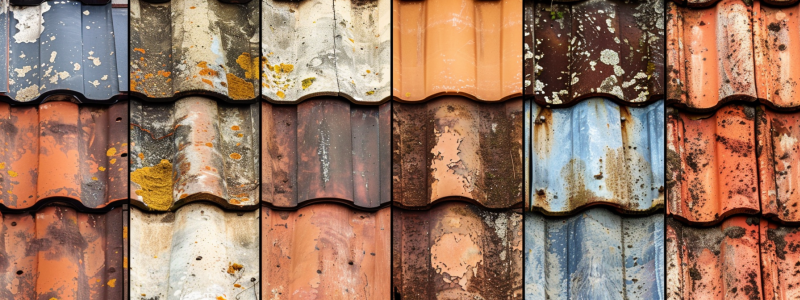
Primary Services Offered by B&M Roofing
B&M Roofing Services provides a comprehensive range of roofing solutions tailored to meet the needs of both residential and commercial clients in Denver. Here are the primary services they offer:
Residential Roofing Services
B&M Roofing is dedicated to helping homeowners protect their most valuable investment. Their residential roofing services include:
- Roof Installation: Whether you’re building a new home or replacing an old roof, B&M Roofing offers expert installation services using high-quality materials. They work with various roofing types, including asphalt shingles, metal roofing, tile, and more.
- Roof Repairs: From minor leaks to significant storm damage, B&M Roofing can handle all types of repairs. Their team quickly identifies the issue and implements effective solutions to restore your roof’s integrity.
- Roof Inspections: Regular roof inspections are essential for maintaining your roof’s health. B&M Roofing provides thorough inspections to catch problems early and recommend necessary maintenance or repairs.
- Roof Maintenance: Preventative maintenance services help extend the lifespan of your roof. B&M Roofing offers customized maintenance plans to keep your roof in top condition year-round.
Commercial Roofing Solutions
B&M Roofing understands the unique challenges of commercial roofing and offers specialized services to meet the needs of businesses and commercial properties, including:
- Commercial Roof Installation: They provide expert installation services for various commercial roofing systems, including flat roofs, TPO, EPDM, and more. Their team ensures that the roofing system is durable and energy-efficient.
- Commercial Roof Repairs: Prompt and effective repair services minimize downtime and protect your business operations. B&M Roofing is experienced in handling complex commercial roof repairs.
- Commercial Roof Maintenance: Regular maintenance is crucial for commercial roofs to prevent costly damage and ensure compliance with warranty requirements. B&M Roofing offers tailored maintenance plans for commercial properties.
- Roof Coatings: Roof coatings can extend the life of your commercial roof, improve energy efficiency, and reduce maintenance costs. B&M Roofing applies high-quality coatings that offer excellent protection and durability.
Emergency Repair Services
Roofing emergencies can happen at any time, and B&M Roofing is ready to respond quickly to mitigate damage and restore your roof. Their emergency services include:
- Storm Damage Repair: Severe weather can cause significant damage to your roof. B&M Roofing offers rapid response and expert repair services to address storm-related issues.
- Leak Repair: Quick and effective leak repair services prevent water damage to your home or business. B&M Roofing’s team identifies the source of the leak and provides a long-lasting fix.
Preventative Maintenance Programs
B&M Roofing’s preventative maintenance programs are designed to keep your roof in optimal condition, preventing major issues and extending its lifespan. Their maintenance services include:
- Regular Inspections: Scheduled inspections to identify potential problems early.
- Routine Maintenance: Services such as cleaning gutters, checking for loose or damaged shingles, and ensuring proper drainage.
- Detailed Reports: Comprehensive reports detailing the condition of your roof and any recommended actions.
Tips for Preparing for Your Roofing Service Appointment
Proper preparation for your roofing service appointment can ensure the process goes smoothly and efficiently. Here are some essential tips to help you get ready for your appointment with B&M Roofing Services:
What to Expect During the Inspection
Understanding what happens during a roof inspection can help you prepare adequately:
- Thorough Examination: The roofing specialist will conduct a detailed inspection of your roof, including the interior and exterior. They will look for signs of damage, wear and tear, and potential problem areas.
- Photographic Evidence: To provide a clear understanding of the roof’s condition, the inspector may take photos of any issues they find. This visual documentation helps explain the recommended repairs or replacements.
- Discussion of Findings: After the inspection, the specialist will discuss their findings with you, explaining any issues and suggesting the best course of action.
How to Prepare Your Home or Business
Preparing your property for a roofing service can help the process go more smoothly and protect your belongings:
- Clear the Area: Ensure that the area around your home or business is clear of any obstacles. Remove vehicles from the driveway and keep pets and children indoors to avoid any accidents.
- Protect Belongings: Inside your home, cover or move valuable items, especially in the attic, to protect them from dust or debris that might fall during the roofing work.
- Inform Neighbors: If your roofing project might affect your neighbors, such as noise or debris, it’s courteous to inform them ahead of time.
Understanding the Timeline and Scope of Work
Knowing what to expect in terms of timeline and work scope can help you plan better:
- Project Timeline: B&M Roofing will provide a detailed timeline outlining each phase of the project, from preparation to completion. Understand the start and end dates and any potential factors that might affect the timeline, such as weather conditions.
- Scope of Work: Be clear on what the project entails. This includes the type of materials being used, specific repairs or installations, and any additional work such as gutter replacement or insulation improvements.
- Communication: Establish a clear line of communication with the project manager or roofing specialist. This ensures that you stay informed about progress and can address any concerns promptly.
Preparing for Disruptions
Roofing projects can cause some disruptions. Here’s how to prepare:
- Noise: Roofing work can be noisy. Plan activities around the expected noise level, and inform any household members or employees about the potential disruptions.
- Debris: There may be debris around your property during the project. Ensure the work area is safe and avoid unnecessary access to the area to prevent accidents.
Post-Service Checklist
Once the roofing service is complete, follow this checklist to ensure everything is in order:
- Inspection: Conduct a walkthrough with the roofing specialist to inspect the completed work. Ensure all agreed-upon repairs or installations have been carried out to your satisfaction.
- Clean-Up: B&M Roofing will handle the clean-up process, ensuring your property is left in good condition. Confirm that all debris has been removed and the site is clean.
- Final Documentation: Obtain any final documentation, such as warranty information and maintenance tips, from the roofing specialist.
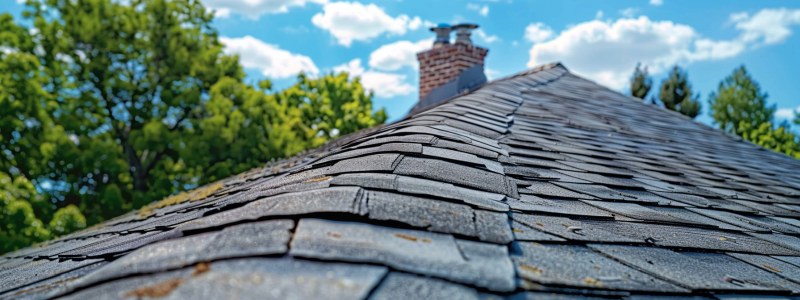
Final Advice
Choosing the right roofing contractor is essential to ensure the longevity and safety of your roof. Here are the key points to consider when booking a roofing contractor in Denver:
- Importance of Regular Maintenance: Regular roof inspections and timely repairs are crucial to prevent small issues from becoming major problems, saving you money in the long run.
- Factors for Choosing a Contractor: Look for licenses and certifications, experience with Denver-specific roofing challenges, positive customer reviews, and transparent pricing. Ensure the contractor offers warranties and has adequate insurance coverage.
- Booking Process with B&M Roofing Services: The process is straightforward, involving an initial consultation, detailed inspection, transparent estimate, scheduling, and clear communication throughout the project.
- Primary Services Offered: B&M Roofing provides comprehensive services, including residential and commercial roofing, emergency repairs, and preventative maintenance programs.
- Success Stories and Testimonials: Satisfied customers and successful projects highlight B&M Roofing’s commitment to quality and customer satisfaction.
- Preparation Tips: Properly prepare for your roofing service appointment by clearing the area, protecting belongings, understanding the timeline, and being ready for any disruptions.
B&M Roofing Services stands out as a reliable and experienced choice for all your roofing needs in Denver. Their extensive range of services, commitment to quality, and customer-centric approach ensure exceptional results. Whether you need minor repairs, a complete roof replacement, or routine maintenance, B&M Roofing has the expertise and resources to deliver.
Don’t wait until small issues become major problems. Contact B&M Roofing Services today to schedule a consultation and take the first step towards a safer, more durable roof. Protect your investment and enjoy the confidence that comes with knowing your roofing needs are in the hands of experts.
Roofing Safety Standards and Best Practices
Roofing projects, be it new installations, repairs, or maintenance, always carry inherent risks. These risks are not only for those working directly on the roof, but also for the occupants of the property and passersby. Therefore, recognizing and mitigating these risks through the adoption of “Roofing Safety Standards and Best Practices” is of utmost importance to ensure that roofing projects are completed without any accidents. Adhering to these standards not only protects individuals but also safeguards the property from potential damage.
The concept of roofing safety encompasses a broad range of practices, from the correct use of equipment to the implementation of fall prevention measures. For homeowners and business owners unfamiliar with the intricacies of roofing, understanding these safety standards might seem daunting. However, these standards exist to preserve human life and property integrity, ensuring that roofing professionals are equipped with the knowledge and tools necessary to perform their tasks safely.
With this article, we at B&M Roofing aim to demystify roofing safety standards and best practices, making this critical information accessible to non-specialists. By providing a comprehensive overview of roofing safety, we hope to empower you with the knowledge to make informed decisions regarding your roofing projects, ensuring safety is always at the forefront.
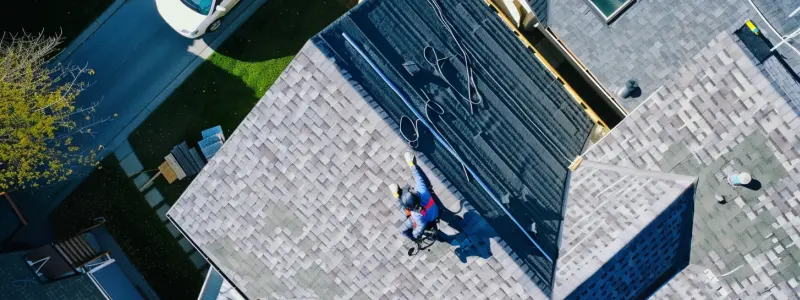
Understanding Roofing Safety Standards
Roofing safety standards are a set of rules and guidelines that aim to safeguard workers, homeowners, business owners, and the general public during roofing projects. These standards encompass a broad range of practices, which include the appropriate use of safety equipment, methods for reducing the risk of falls, and the proper handling of roofing materials and tools.
At their core, roofing safety standards aim to:
- Minimize occupational hazards: By providing clear guidelines on safe working practices, these standards help reduce the risk of accidents and injuries on roofing projects.
- Ensure quality workmanship: Safe work environments lead to better-quality roofing installations and repairs. Workers are more likely to perform their best when they feel secure.
- Protect property: By following safety protocols, the risk of damage to the property during roofing projects is significantly reduced.
- Comply with legal requirements: In many jurisdictions, adhering to roofing safety standards is not just best practice—it’s the law. Non-compliance can result in hefty fines and legal liabilities.
Extensive research and industry experts establish roofing safety standards. National or international safety organizations often set these standards, such as OSHA. The organizations continually update these standards to incorporate new research findings, technological advancements, and changes in the way roofing work is conducted. This ensures that the guidelines reflect the most effective and safest roofing practices available.
The Role of Regulatory Bodies
Regulatory bodies play a pivotal role in establishing, enforcing, and updating roofing safety standards. The Occupational Safety and Health Administration (OSHA) is the primary federal agency responsible for regulating workplace safety, including the roofing industry. OSHA’s mandates are designed to ensure that employers provide safe and healthful workplaces by setting and enforcing standards and by providing training, outreach, education, and assistance.
The role of regulatory bodies like OSHA in roofing safety includes:
- Developing Safety Standards: OSHA researches and establishes comprehensive safety and health regulations specific to the roofing industry. These standards cover everything from fall protection to the correct handling and storage of materials and equipment.
- Enforcement: OSHA has the authority to inspect workplaces, including roofing sites, to ensure compliance with safety standards. Inspections may be scheduled or may occur unannounced, particularly if a complaint has been filed or a recent accident reported.
- Education and Training: OSHA provides a wealth of resources for employers and workers, including guidelines, training programs, and educational materials to promote understanding and compliance with safety standards.
- Assistance and Advice: OSHA offers consultation services to help employers identify and correct potential safety and health issues in their workplaces. This service is confidential and separate from enforcement activities.
Regulatory bodies play a vital role in ensuring that the roofing industry adheres to safety standards. These standards are not only important for legal compliance but also create a culture of safety that prioritizes the well-being of workers and the general public.
Key Components of Roofing Safety Standards
Roofing safety standards encompass a broad range of practices and protocols designed to mitigate risks associated with roofing work. These standards are detailed and specific, ensuring that every potential hazard is addressed. Below are some of the key components that form the foundation of roofing safety standards:
- Fall Protection: Given that falls are the leading cause of fatalities in the construction industry, roofing safety standards place a significant emphasis on fall protection measures. This includes the use of guardrails, safety nets, personal fall arrest systems, and ensuring safe access to roofs.
- Ladder and Scaffold Safety: Proper use, inspection, and placement of ladders and scaffolds are crucial to prevent falls. Standards cover aspects such as secure footing, appropriate angles for ladder placement, and the safe construction and stabilization of scaffolding.
- Electrical Safety: Roofing projects often pose the risk of electrical hazards, especially when working near power lines or during the installation of solar panels. Safety standards address the necessary precautions to avoid electrocution, including maintaining a safe distance from power lines and using non-conductive ladders.
- Tool and Equipment Safety: The correct use and maintenance of tools and equipment, from nail guns to roofing shovels, are covered under roofing safety standards. This includes ensuring tools are in good working order, using protective guards, and wearing appropriate personal protective equipment (PPE).
- Heat Stress and Hydration: Working on roofs, particularly in hot weather, can lead to heat stress. Safety standards emphasize the importance of hydration, frequent breaks, and monitoring for signs of heat-related illnesses.
Having knowledge about these components empowers property owners to engage in discussions with contractors about safety measures and reinforces the priority of safety on roofing projects.
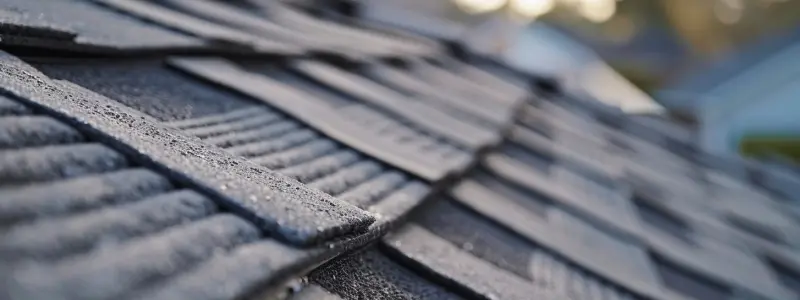
Best Practices for Roofing Safety
The foundation of roofing safety lies in the proper training and education of roofing professionals. This crucial aspect ensures that all individuals involved in roofing projects are aware of potential hazards and know how to mitigate them effectively. Training programs and continuous education initiatives play a pivotal role in promoting safety culture within the roofing industry, directly impacting the overall success and safety of roofing projects. Here are the key elements of training and education for roofing professionals:
- Comprehensive Safety Training: Before setting foot on a job site, roofing professionals should undergo comprehensive safety training. This training covers a broad range of topics, including fall protection, ladder and scaffold safety, electrical hazards, and proper use of personal protective equipment (PPE). The goal is to equip workers with the knowledge and skills necessary to recognize and avoid hazards.
- Specialized Training for Equipment and Tools: Given the variety of tools and equipment used in roofing, specialized training is essential. This includes how to correctly operate machinery such as hoists and lifts, as well as the safe handling of hand and power tools. Understanding the specific risks associated with each piece of equipment and how to mitigate them is crucial.
- Certifications and Credentials: Many organizations offer certification programs for roofing professionals. These programs typically involve both coursework and practical assessments, covering topics such as installation techniques, building codes, and, importantly, safety standards. Obtaining certifications not only enhances a roofer’s skills but also demonstrates their commitment to safety and professionalism.
- Safety Culture: Beyond formal training and education, fostering a safety culture within roofing companies is vital. This involves creating an environment where safety is always the priority, and workers feel empowered to voice concerns and suggest improvements. Regular safety meetings and discussions can help reinforce the importance of safety and ensure that it remains a central focus on every project.
The Importance of Using Safety Equipment
The use of appropriate safety equipment is a cornerstone of roofing safety, protecting workers from the inherent risks of their jobs. Safety equipment, often referred to as personal protective equipment (PPE), includes a variety of tools and gear designed to prevent injuries and accidents on roofing projects. Below, we outline the critical aspects of safety equipment in roofing:
- Personal Fall Arrest Systems (PFAS): These systems are crucial for preventing falls from heights, one of the most significant risks in roofing. A PFAS typically includes a full-body harness, a lanyard, and an anchor point, which together stop a fall in progress and minimize the impact on the worker.
- Ladders and Scaffold Systems: Safe access to the roof is essential. Ladders and scaffolds must comply with safety standards, ensuring they are stable, secure, and appropriate for the specific task. Proper setup and use are critical to prevent falls.
- Head Protection: Helmets or hard hats protect against falling objects, accidental bumps against fixed objects, and electrical hazards. They are a simple yet effective form of protection that can prevent serious head injuries.
- Eye and Face Protection: Safety glasses or face shields protect against flying debris, dust, and chemical splashes. Given the nature of roofing work, which often involves cutting, nailing, and the application of chemicals, eye and face protection is indispensable.
- Hearing Protection: Roofing can be a noisy job, especially when it involves power tools. Earplugs or earmuffs protect workers from long-term hearing damage caused by prolonged exposure to loud noises.
- Respiratory Protection: Masks or respirators are necessary when working with materials that produce dust or fumes, such as during the application of certain roofing coatings or when sawing wood. They prevent inhalation of harmful particles, protecting the respiratory system.
Investing in and correctly using the right safety equipment is not just a regulatory requirement but a practical necessity for minimizing the risks associated with roofing work. It’s advisable to choose contractors who prioritize the use of safety equipment, as this reflects their overall commitment to the safety and well-being of their workers and the quality of the project.
Regular Inspections and Maintenance of Roofing Equipment
Regular inspections and maintenance of roofing equipment are vital to ensuring the safety and efficiency of roofing projects. Well-maintained equipment not only performs better but also significantly reduces the risk of accidents and injuries. Here’s why regular checks and upkeep are integral to roofing safety best practices:
- Preventing Equipment Failure: Regular inspections can identify wear and tear or defects that might lead to equipment failure. By catching these issues early, repairs or replacements can be made before the equipment is used, thereby preventing potential accidents.
- Ensuring Safety Equipment Integrity: Safety equipment, such as harnesses and ladders, must be in optimal condition to provide effective protection. Regular maintenance checks ensure that safety gear meets the required safety standards and functions correctly at all times.
- Maximizing Efficiency: Well-maintained tools and equipment operate more efficiently, reducing the physical strain on workers and the time needed to complete tasks. This efficiency can indirectly contribute to safety by reducing the chances of overexertion and fatigue-related accidents.
- Compliance with Safety Regulations: Many safety regulations specifically mandate the regular inspection and maintenance of equipment used on construction sites, including roofing projects. Compliance with these regulations not only ensures the safety of workers but also protects businesses from potential fines and legal issues.
- Creating a Safety-First Culture: Regular maintenance routines underscore a company’s commitment to safety. When workers see that their employer invests time and resources into ensuring their equipment is safe and well-maintained, it reinforces the importance of safety in the workplace.
Implementation of Inspection and Maintenance Programs
- Scheduled Inspections: Having a regular schedule for inspecting tools, equipment, and safety gear is crucial to ensure nothing is missed. It is also important to maintain a record of these inspections and document any issues found along with the steps taken to resolve them.
- Maintenance and Repair Protocols: Once a problem is identified, it is important to establish clear protocols for maintaining or repairing the equipment. This includes determining whether the equipment can be safely fixed or if it needs to be replaced.
- Training on Proper Use and Maintenance: It is essential to provide workers with training not only on how to safely operate the equipment but also on basic maintenance checks they can perform before using it. This includes inspecting for any visible defects, ensuring proper cleaning after usage, and following appropriate storage practices to prevent any damage.
Choosing a contractor who regularly maintains their equipment demonstrates their overall professionalism and commitment to safety, ensuring that the roofing project is completed safely and to a high standard.
Emergency Preparedness and Response Planning
Effective emergency preparedness and response planning is a critical component of roofing safety best practices. It ensures that in the event of an accident or unexpected situation, immediate and appropriate actions are taken to minimize injuries and damage. This planning involves several key elements:
- Emergency Response Plan (ERP): Every roofing project should have a tailored Emergency Response Plan that outlines specific procedures for dealing with various types of emergencies, such as falls, medical incidents, fires, or severe weather conditions. This plan should include emergency contact numbers, locations of first aid kits, and evacuation routes.
- First Aid Training: Roofing professionals should be trained in basic first aid to provide immediate assistance in case of minor injuries. For more severe injuries, knowing how to stabilize the individual until professional medical help arrives can be lifesaving.
- Regular Drills: Conducting regular emergency drills ensures that everyone knows their role and actions to take in an emergency. Drills can help identify any weaknesses in the emergency plan, allowing for adjustments and improvements.
- Communication Tools: Effective communication is vital during an emergency. Roofing teams should have access to communication tools, such as walkie-talkies or cell phones, that allow them to quickly alert others about an emergency situation.
- Incident Reporting and Investigation: After an emergency, it’s crucial to report and investigate the incident to understand what happened and why. This process helps in identifying measures that can prevent similar incidents in the future.
Contractors who prioritize and have clear emergency plans demonstrate a commitment to safety and preparedness. This not only minimizes the risk of accidents but also ensures a swift and organized response should an unexpected event occur, safeguarding everyone involved in the project. Choosing a contractor with a robust emergency preparedness plan is an essential step in ensuring the safety and success of any roofing project.
Roofing Safety Tips for Homeowners and Business Owners
One of the most vital decisions you can make when undertaking a roofing project is selecting the right contractor. Hiring certified and experienced roofing contractors is not just a matter of ensuring quality workmanship; it’s also a significant factor in ensuring the safety of the project. Here’s why prioritizing certification and experience is vital:
- Knowledge of Safety Standards: Certified roofing contractors have undergone rigorous training and assessment to ensure they are knowledgeable about the latest roofing techniques, materials, and importantly, safety standards. Their certification is a testament to their commitment to safe working practices.
- Experience in Handling Complex Situations: Experience brings with it a familiarity with the myriad of challenges roofing projects can present. Experienced contractors have likely encountered a broad range of scenarios and know how to safely manage unexpected situations, reducing the risk of accidents.
- Compliance with Regulations: Certified contractors must stay up-to-date with local building codes and safety regulations. This ensures that your roofing project not only meets quality standards but is also in compliance with all safety regulations, protecting you from potential liabilities.
- Access to Quality Materials and Proper Equipment: Professional contractors who have invested in their certification and have extensive experience are more likely to use high-quality materials and the proper equipment. This commitment to quality further enhances the safety and durability of your roofing project.
- Liability and Insurance: Certified and experienced contractors are more likely to carry the necessary liability insurance and worker’s compensation. This protects you as the homeowner or business owner from potential legal and financial liabilities in the event of an accident on your property.
- Warranty and Aftercare: Professional contractors often offer warranties on their work and provide aftercare services. This means that should any issues arise post-completion, especially those related to safety or quality, they will address them promptly.
How to Verify Certification and Experience
- Check Credentials: Ask for proof of certification and check it against issuing authorities. This might include certifications from the National Roofing Contractors Association (NRCA) or an equivalent.
- Review Past Work: Experience can be gauged by reviewing past projects. Ask for references or case studies of previous work, paying attention to the complexity and safety measures implemented.
- Consult Reviews and Testimonials: Online reviews and testimonials can provide insights into a contractor’s reliability, quality of work, and adherence to safety practices.
Choosing a roofing contractor with the right credentials and experience is essential for ensuring the safety and success of your roofing project. By prioritizing these factors in your selection process, you can have peace of mind knowing that your project is in capable hands.
Importance of Regular Roof Inspections by Professionals
Regular roof inspections by professional roofing contractors are crucial for maintaining the safety and longevity of your roof. Here are some reasons why regular professional inspections are an essential component of roofing safety and maintenance:
- Early Detection of Issues: Professional roofers have the expertise to identify signs of wear, damage, or potential failure that may not be visible to the untrained eye. Early detection allows for timely repairs, preventing minor issues from escalating into major, costly problems.
- Preventative Maintenance: Regular inspections allow for the implementation of preventative maintenance measures. This proactive approach can extend the life of your roof, saving homeowners and business owners significant money over time.
- Safety Assurance: Inspectors can also assess the safety of your roof, identifying any risks that could compromise the safety of the occupants or the public. This includes checking for structural integrity, proper drainage, and the absence of loose materials that could pose a hazard.
- Compliance with Warranties: Many roofing material warranties require regular professional inspections as part of their terms. Failing to adhere to these requirements can void the warranty, leaving you without coverage in case of material failure.
Frequency of Inspections
- Routine Inspections: It’s advisable to have your roof inspected by a professional at least once a year. However, the exact frequency may vary based on the age of your roof, local weather conditions, and any prior issues.
- After Severe Weather: In addition to routine inspections, it’s wise to schedule a professional inspection after severe weather events, such as heavy storms, hail, or high winds. These conditions can cause damage that may not be immediately obvious.
- When Buying or Selling a Property: A professional roof inspection is recommended when buying or selling a property. This inspection can identify any existing or potential roofing issues, affecting the property’s value and negotiation process.
We know how important it is to choose the right roofing professional for your inspections. That’s why we suggest looking for contractors with certifications, good reviews, and expertise in your specific roofing type. With regular professional roof inspections, you’re not only safeguarding your property but also ensuring the safety, efficiency, and longevity of your roofing system for those who use it. You can trust B&M Roofing; it’s an investment that pays off in the long run.
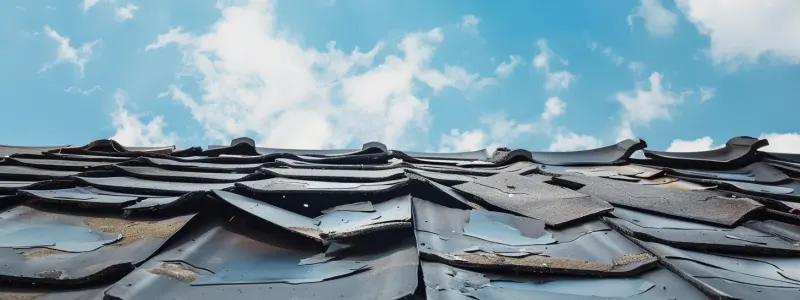
Final Words
When it comes to roofing, it is essential to follow safety protocols and best practices. Whether it’s through ensuring the use of safety equipment, understanding the basics of roofing safety, or choosing the right roofing contractor, each aspect plays a crucial role in maintaining a safe environment for everyone involved.
By embracing roofing safety standards and best practices, you can collectively enhance the safety, efficiency, and quality of roofing projects. It’s a shared responsibility that benefits not only the immediate stakeholders but also the wider community by promoting a culture of safety and excellence in the roofing industry.
We’ve discovered that choosing reliable and knowledgeable roofing contractors, like B&M Roofing, is crucial for a secure and prosperous roofing project. With their proficiency and unwavering commitment to safety standards, you can rest assured that your property is in good hands. Protect your investment with a job well done by B&M Roofing. Contact us today!
Choosing the Right Roof for Your Colorado Home
Choosing the right roof for your Colorado home is a critical decision not only for its appearance but also for its ability to protect your household, increase its energy efficiency, and withstand the unique weather conditions that define the Colorado climate. Colorado’s varied landscapes, ranging from the majestic peaks of the Rocky Mountains to the arid plains of the Eastern Slope, are accompanied by equally varied weather patterns. These weather patterns can range from heavy snowfall and freezing temperatures in the winter to intense sun and occasional hailstorms in the summer.
For homeowners and business owners who may not be familiar with the intricacies of roofing materials and construction, navigating the options can seem daunting. However, the importance of this choice cannot be overstated. The right roof does more than just cover your home; it is critical in its structural integrity, energy efficiency, and overall value.
In this article, we will guide you through the essential considerations and options available to ensure that your property is equipped with a roof that is not only aesthetically pleasing but also durable and suitable for Colorado’s challenging climate. Whether you’re building a new home, replacing an old roof, or simply exploring ways to enhance your property’s resilience, understanding how to choose the right roof is the first step towards securing your investment and ensuring the comfort and safety of those within.
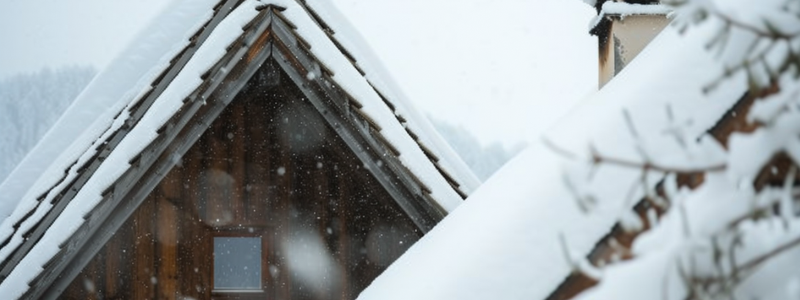
Understanding Colorado’s Climate
When embarking on choosing the right roof for your Colorado home, comprehending the state’s unique climate is paramount. Colorado’s weather is marked by its diversity and extremity, which significantly impacts the selection of roofing materials and designs. Here are the key climate characteristics and their implications for roofing:
- Heavy Snowfall and Freezing Temperatures:
- Winter in Colorado can place a significant weight load on roofs due to heavy snowfall.
- The freeze-thaw cycle can damage roofing materials, as water expands when it freezes after seeping into cracks.
- Intense UV Exposure:
- Summer brings intense sun, which can degrade many roofing materials, reducing their lifespan.
- Sudden Hailstorms:
- Hail can cause immediate and severe damage to roofs not designed to withstand such impacts, leading to leaks and structural problems.
- High Winds:
- Strong gusts can lift or remove roofing materials that are not properly secured or inherently less resistant to wind uplift.
Given these conditions, the choice of roofing material and construction must be made with a thorough understanding of Colorado’s climate. The right roof will:
- Protect your home from the elements.
- Contribute to energy efficiency by maintaining a stable internal temperature, regardless of external weather conditions.
We’re thrilled to help Colorado homeowners make informed roofing decisions by understanding the unique local climate. Our expertise ensures you’ll have materials and designs that can withstand any weather challenge.
Types of Roofing Materials Suitable for Colorado Homes
Choosing the right roof for your Colorado home involves selecting materials that can withstand the state’s diverse and extreme weather conditions. Here’s a breakdown of the most suitable roofing materials for Colorado homes, along with their benefits and drawbacks:
- Asphalt Shingles:
- Benefits: Cost-effective, widely available, and come in various colors and styles. Good resistance to wind and hail when installed with proper reinforcement.
- Drawbacks: Shorter lifespan compared to other materials and can be prone to damage from extreme temperature fluctuations.
- Metal Roofing:
- Benefits: Exceptionally durable, long lifespan, excellent for snow shedding, and energy-efficient. Resistant to hail damage and high winds.
- Drawbacks: Higher initial cost and requires professional installation for optimal performance.
- Slate Roofing:
- Benefits: Offers a natural look, extremely durable, long lifespan, and fire-resistant. Performs well in heavy snow and hail conditions.
- Drawbacks: Very heavy, requiring additional structural support, and is one of the most expensive roofing options.
- Tile Roofing (Clay or Concrete):
- Benefits: Durable, long lifespan, excellent in high-heat conditions, and offers a unique aesthetic. Good resistance to hail and fire.
- Drawbacks: Heavy like slate and can be expensive. Requires a reinforced roof structure to support the weight.
- Composite Roofing:
- Benefits: Made from a mixture of materials, can mimic the look of wood, slate, or tile. Lightweight, durable, and with a moderate cost. Good resistance to fire, wind, and hail.
- Drawbacks: Lifespan varies with quality, and not all composite materials offer the same level of durability.
When selecting a roofing material for your Colorado home, consider:
- Durability: The material’s ability to withstand heavy snow, hail, and UV exposure.
- Weight: Ensure your home’s structure can support the weight of materials like slate or tile.
- Cost: Factor in both the initial installation cost and the long-term maintenance and replacement costs.
- Aesthetic: Choose a material that complements your home’s architectural style and the surrounding landscape.
Each material offers a unique set of advantages and challenges, making it crucial to weigh these factors carefully. The right choice will balance durability, weight, cost, and aesthetic appeal, ensuring your roof is equipped to protect your home against Colorado’s harsh climate while enhancing its overall value and appearance.

Factors to Consider When Choosing the Right Roof
When selecting the right roof for your Colorado home, several critical factors must be taken into account to ensure that your choice not only meets your aesthetic preferences but also stands up to the state’s challenging weather conditions. Here’s a breakdown of these key considerations:
- Durability and Weather Resistance:
- The material’s ability to withstand Colorado’s heavy snow, hail, high winds, and intense UV exposure is paramount. Opt for materials known for their resilience in these conditions.
- Energy Efficiency:
- Consider how well the roofing material insulates your home and reflects sunlight, contributing to lower heating and cooling costs. Materials that offer better insulation and reflectivity can significantly reduce energy expenses.
- Aesthetic Appeal:
- The roof should complement your home’s architectural style and the surrounding environment. The right material and color can enhance your home’s curb appeal and potentially increase its market value.
- Cost:
- Evaluate both the upfront installation costs and the long-term maintenance and replacement costs. While some materials may have a higher initial cost, their durability and lifespan could offer savings over time.
- Weight:
- Ensure that your home’s structure can support the weight of the chosen material. Heavy materials like slate and tile may require additional structural reinforcement, adding to the project’s cost.
- Local Building Codes and HOA Regulations:
- Be aware of any local building codes or homeowners association (HOA) regulations that may restrict the use of certain roofing materials or colors in your area.
- Sustainability:
- For homeowners concerned with environmental impact, consider roofing materials that are recyclable and have a lower carbon footprint. Some materials also contribute to a cooler roof, reducing the urban heat island effect.
- Maintenance Requirements:
- Understand the maintenance needs of each material. Some require more frequent inspections and repairs to maintain their integrity and appearance over time.
Homeowners and business owners should carefully consider various factors before deciding on a roofing option that balances practicality with personal preference. It’s important to consult with a professional roofing contractor who understands the local climate and building codes to get valuable insights and make an informed decision that best fits your specific needs. Remember, we are here to help you with your roofing needs.
Maintenance and Longevity
The maintenance and longevity of your roof are crucial factors to consider when choosing the right roof for your Colorado home. A well-maintained roof not only extends the life of your investment but also ensures your home remains safe and energy-efficient. Here are key points to understand about maintaining different roofing materials and how they impact the longevity of your roof:
- Regular Inspections:
- Conducting regular inspections, especially after severe weather events, can help identify and address minor issues before they escalate into major problems. It’s recommended to inspect your roof at least twice a year.
- Cleaning and Maintenance:
- Different materials require different levels of maintenance. For instance, asphalt shingles may need periodic cleaning to remove algae or moss, while metal roofs might need checks for rust or corrosion. Tile roofs should be inspected for cracked or broken tiles, and debris should be cleared to prevent water buildup.
- Impact of Colorado’s Climate:
- The longevity of roofing materials in Colorado can be significantly affected by the state’s climate. Materials that are resistant to UV rays, hail, and thermal cycling (the process of expanding and contracting due to temperature changes) tend to have a longer lifespan.
- Expected Lifespan of Materials:
- Asphalt shingles, the most common roofing material, typically last between 15 to 30 years, depending on the quality and maintenance.
- Metal roofs can last 40 to 70 years, with some materials lasting even longer with proper care.
- Slate and tile roofs offer exceptional longevity, often exceeding 100 years, but require a strong structural foundation due to their weight.
- Composite roofing materials have varied lifespans, generally between 30 to 50 years, depending on the quality and maintenance.
- Preventative Measures:
- Taking preventative measures, such as proper insulation and ventilation in your attic, can prevent ice dams and reduce wear on your roof.
- Immediate repair of minor damages, like replacing missing shingles or sealing leaks, can extend the life of your roof.
- Professional Maintenance:
- While homeowners, professional inspections and repairs can perform some maintenance tasks ensure that your roof remains in optimal condition. Professionals can spot potential issues that are not obvious to the untrained eye.
Understanding the maintenance requirements and expected longevity of your chosen roofing material is essential for making an informed decision. A roof that is well-suited to Colorado’s climate and properly maintained can provide decades of protection for your home, making it a wise investment in the long-term safety and efficiency of your property.
Professional Installation and Choosing the Right Contractor
Ensuring professional installation and choosing the right contractor are critical steps in choosing the right roof for your Colorado home. A high-quality roofing material can only perform to its fullest potential when installed correctly. Here are essential tips and considerations for selecting a roofing contractor and ensuring the installation process meets the highest standards:
- Research and Referrals:
- Start by researching local roofing contractors with a solid reputation for quality workmanship. Ask for referrals from friends, family, or neighbors who have had roofing work done recently.
- Check Credentials and Experience:
- Verify the contractor’s credentials, including licensing and insurance. Ensure they have experience with the specific type of roofing material you’re considering. Specialized materials like slate or tile require specific expertise.
- Look at Reviews and Past Work:
- Check online reviews and ask for references to assess the contractor’s track record. If possible, view previous installation projects to gauge the quality of their work.
- Get Multiple Quotes:
- Obtain quotes from several contractors to compare prices, but remember that the lowest bid isn’t always the best. Consider the quality of materials, scope of work, and warranty offered.
- Ask About the Installation Process:
- Discuss the installation process in detail. Understand the timeline, the steps involved, and how the contractor plans to address any potential challenges specific to your property or chosen material.
- Understand the Warranty:
- Ensure you understand the warranty on both the materials and the installation. A reputable contractor will offer a warranty that covers both aspects and clearly explains what is included and any exclusions.
- Communication and Professionalism:
- Choose a contractor who communicates clearly and professionally. They should be willing to answer your questions and provide updates throughout the project.
- Permits and Regulations:
- A professional contractor will handle all necessary permits and ensure that the installation complies with local building codes and regulations, including any specific to Colorado’s climate and environmental conditions.
- Post-Installation Support:
- Inquire about the contractor’s policy for handling any issues that may arise after the installation is complete. Reliable post-installation support is a sign of a reputable contractor.
Selecting the appropriate roofing contractor is just as important as choosing the right roofing material. A competent and experienced contractor guarantees that your roof is installed to the highest standards, providing the best possible protection and durability for your Colorado home. By following these guidelines, you can make an informed decision and have complete peace of mind, knowing that your roofing project is in capable hands.
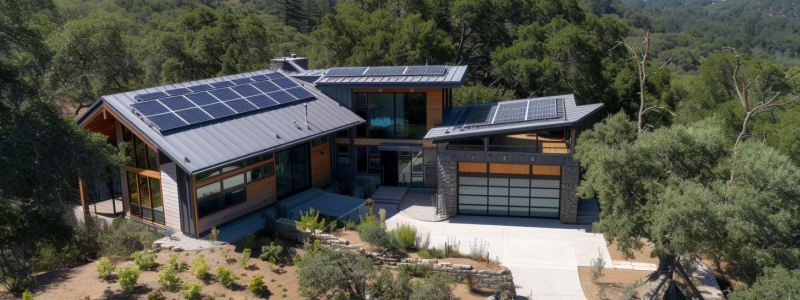
Final Advice
Choosing the right roof for your Colorado home is a multifaceted decision that requires careful consideration of the state’s unique climate, the durability and energy efficiency of various roofing materials, and the importance of professional installation. By understanding the specific challenges posed by Colorado’s weather, from heavy snowfall and hail to intense UV exposure, homeowners can select materials that offer the best protection and longevity for their homes.
The selection process involves balancing factors such as durability, aesthetic appeal, energy efficiency, and cost, while also considering the weight of the materials and local building codes. Materials like asphalt shingles, metal roofing, slate, and tile each have their advantages and maintenance requirements, making it crucial to choose a material that aligns with your needs and preferences.
Professional installation by a reputable contractor like B&M Roofing is paramount to ensure that the roof is installed correctly and performs as expected. Homeowners should conduct thorough research, check credentials, and communicate clearly with potential contractors to ensure the best outcome for their roofing project.
Why us?
We are thrilled to help you find the perfect roof for your Colorado home! Our team understands the importance of balancing style with functionality, which is why we prioritize durability, energy-efficiency, and cost-effectiveness. Our expert approach to selection and installation ensures that your roof will be a wise investment, safeguarding your home and increasing its value for years to come. With our help, you can trust that your roof will not only look great, but also stand up to the toughest weather conditions.
Importance of Regular Roof Maintenance
Roof maintenance is an essential aspect of property upkeep that often goes unnoticed until significant problems arise. At its core, roof maintenance involves regular inspections, cleaning, repairs, and preventative measures to ensure the longevity and functionality of a roofing system. This process is crucial for identifying potential issues early on, such as leaks, damaged shingles, or wear and tear, and addressing them before they escalate into more severe problems. Effective roof maintenance not only extends the lifespan of a roof but also helps in maintaining the aesthetic appeal of a property, ensuring energy efficiency, and safeguarding the building against weather-related damages.
BM Roofing and Its Expertise in the Field
BM Roofing stands as a beacon of excellence in the roofing industry, particularly in Denver, Colorado. With years of experience under our belt, BM Roofing has established itself as a trusted name among homeowners and business owners alike. Our team of skilled professionals is equipped with the knowledge, tools, and dedication needed to provide top-notch roof maintenance services. At BM Roofing, we understand that each roof has its unique needs and challenges. Therefore, we tailor our approach to meet the specific requirements of each client, ensuring their roof remains in optimal condition year-round. Our commitment to quality, combined with our expertise in the latest roofing techniques and materials, positions us as the go-to experts for all roofing maintenance needs.
Stay tuned for the next section, where we will delve into why regular roof maintenance matters and its pivotal role in preserving the integrity of your property.

Why Regular Roof Maintenance Matters
The importance of regular roof maintenance cannot be overstated when it comes to preserving the integrity of both residential and commercial properties. A well-maintained roof is vital in protecting a building from the elements, such as rain, snow, wind, and extreme temperatures. Regular maintenance ensures that the roof remains strong and functional, thereby safeguarding the interior of the property from water damage, mold growth, and insulation problems. Additionally, a roof in good condition contributes significantly to the overall energy efficiency of a building, helping to regulate indoor temperatures and reduce energy costs. In essence, regular roof maintenance is not just about fixing immediate issues; it’s about proactive care that extends the life of the roof and maintains the building’s structural integrity.
The Potential Risks and Costs of Neglecting Roof Maintenance
Neglecting roof maintenance can lead to a host of problems, often resulting in substantial costs and risks to property owners. Small issues like minor leaks or cracked shingles can quickly escalate into major concerns if not addressed promptly. For instance, water intrusion can lead to structural damage, rotting wood, and harmful mold growth, all of which are costly to repair. Moreover, a poorly maintained roof can significantly decrease a property’s value and curb appeal. In extreme cases, neglecting roof maintenance can even lead to roof failure, posing serious safety risks and necessitating expensive emergency repairs or replacements. Regular roof maintenance is, therefore, a critical investment that saves property owners from the high costs and risks associated with neglected roof issues.
In the following section, we will explore residential roof maintenance and how BM Roofing’s services can help protect your home.
Residential Roof Maintenance: Protecting Your Home
At BM Roofing, we specialize in a comprehensive range of residential roofing services designed to protect and preserve your home. Our team of experts conducts thorough inspections to assess the condition of your roof, identifying any potential issues such as missing or damaged shingles, leaks, or signs of wear and tear. Following the inspection, we provide tailored maintenance solutions, including repairs, cleaning, and preventive treatments, to ensure your roof remains in peak condition. We also offer guidance on selecting the best materials and roofing practices for your home, considering factors like local climate, roof design, and your personal preferences. Our commitment is to provide homeowners with peace of mind, knowing their roof is well-maintained and capable of withstanding the challenges posed by the environment.
Common Issues in Residential Roofs
Residential roofs are susceptible to a variety of issues, primarily due to weather exposure and aging. Common problems include leaks, which can lead to water damage inside the home; damaged or missing shingles, which compromise the roof’s integrity; and clogged gutters, which can cause water to pool and damage the roof structure. Regular maintenance from BM Roofing helps in early detection and repair of these issues, preventing them from escalating into more significant problems. For instance, replacing worn or broken shingles promptly can prevent leaks, while cleaning and inspecting gutters regularly can avoid water damage and structural issues.
Commercial Roof Maintenance: Safeguarding Your Business
Commercial roofing presents a unique set of challenges and requirements that differ significantly from residential roofing. Typically, commercial roofs are larger, have a flat or low slope, and are subject to different types of wear and tear, especially in industrial environments. These roofs often house critical equipment such as HVAC systems and need to withstand heavy foot traffic during maintenance and repairs. At BM Roofing, we understand these distinctive needs and are equipped to provide specialized commercial roofing services. Our team is trained to handle the complexities of commercial roofs, ensuring that they meet all safety standards and building codes while providing maximum protection and efficiency for your business.
Benefits of Regular Maintenance for Commercial Properties
Regular maintenance of commercial roofs is crucial for several reasons. Firstly, it ensures the longevity of the roof, which is a significant investment for any business. Regular inspections and timely repairs can prevent minor issues from becoming major disruptions that could affect daily operations. Secondly, a well-maintained roof is essential for the safety of the employees and customers, as it reduces the risk of collapses or leaks that could lead to accidents or damage to property. Finally, maintaining the roof in top condition can improve energy efficiency, reducing heating and cooling costs – a significant factor in operational expenses for most businesses.
Understanding Roof Inspections
Roof inspections are a critical component of overall roof maintenance. At BM Roofing, a typical roof inspection involves a comprehensive evaluation of the entire roofing system. Our experts meticulously examine the roof’s surface, looking for signs of wear and tear, such as cracked, missing, or damaged shingles or tiles. We also inspect the gutters, downspouts, and flashing for any signs of damage or blockage. In addition to the visible inspection, our team assesses the roof for any structural issues, checking for signs of sagging or water damage in the attic and interior spaces that could indicate hidden problems. This thorough process helps in identifying potential issues early, enabling timely interventions that can prevent costly repairs in the future.
The Role of Inspections in Preventative Maintenance
The role of roof inspections in preventative maintenance cannot be overstated. Regular inspections by professionals like BM Roofing are essential in maintaining the health of your roof. These inspections allow for the early detection of potential problems, from minor leaks to structural weaknesses, which can be addressed before they escalate into major concerns. By identifying and resolving these issues early, preventative maintenance extends the lifespan of your roof, ensures continuous protection for your property, and can significantly reduce the likelihood of unexpected and expensive repairs. Essentially, regular roof inspections are an investment in the longevity and performance of your roofing system.
In the following section, we will explore common roofing problems and how regular maintenance can provide effective solutions to these challenges.

Common Roofing Problems and Solutions
Both residential and commercial properties face a range of common roofing problems. The importance of regular roof maintenance is key to detect leaks which are some of the most prevalent issues, often caused by aging materials, weather damage, or improper installation. Another frequent issue is damaged or missing shingles or tiles, which can leave the roof vulnerable to the elements. Poor drainage or clogged gutters can lead to water pooling and subsequent roof damage. Additionally, environmental factors like wind, hail, and extreme temperatures can take a toll on the roof’s integrity. In commercial settings, flat roofs may face unique challenges such as blistering or pooling water due to their design.
How Regular Maintenance Can Address and Prevent These Problems
Regular maintenance is key to addressing and preventing these common roofing problems. At BM Roofing, our maintenance services include routine inspections to identify and promptly repair leaks or replace damaged shingles. We ensure gutters and drainage systems are clean and functional to prevent water pooling. Regular maintenance also involves checking and reinforcing the roofing material to withstand environmental stressors. For commercial roofs, we pay special attention to flat roof specifics, ensuring they are free of debris and water does not pool. By addressing these issues proactively, regular maintenance not only fixes current problems but also helps in preventing future damage, thereby saving homeowners and business owners significant time and money in the long run.
In the next section, we will answer some Frequently Asked Questions (FAQs) about roof maintenance, providing expert answers and tips to help you understand the importance and necessity of maintaining your roof.
Energy Efficiency Benefits of Regular Roof Maintenance
Regular roof maintenance plays a pivotal role in enhancing the energy efficiency of both residential and commercial buildings. A well-maintained roof provides effective insulation and reflects heat, significantly reducing the amount of energy required to heat or cool the building. This not only leads to lower energy bills but also contributes to a more comfortable indoor environment. BM Roofing focuses on maintenance practices that optimize your roof’s energy performance, such as ensuring proper ventilation, repairing leaks, and recommending materials that offer better insulation and reflectivity.
Contributing to Environmental Sustainability
In addition to improving energy efficiency, regular roof maintenance contributes to environmental sustainability. By extending the lifespan of roofing materials, maintenance reduces waste and the need for new resources. Well-maintained roofs also support the installation and efficiency of solar panels, further contributing to a property’s green credentials. BM Roofing is committed to sustainable roofing practices, recommending eco-friendly materials and solutions that reduce your carbon footprint and promote environmental health.
The Role of Green Roofing Options
Exploring green roofing options is another aspect where regular maintenance can make a significant difference. Green roofs, which are covered with vegetation, offer excellent insulation, reduce stormwater runoff, and help combat urban heat islands. BM Roofing can guide you through the feasibility and benefits of such eco-friendly options, ensuring that your roofing choices align with both your personal values and environmental sustainability goals.
By prioritizing regular roof maintenance, homeowners and business owners can enjoy not only the structural and financial benefits but also contribute to a healthier environment and a more sustainable future. BM Roofing is here to assist you in making informed decisions that benefit your property, your wallet, and the planet.
FAQs on Roof Maintenance
In this section, we aim to address some of the most common questions and concerns about roof maintenance, providing clear and informative answers to help homeowners and business owners understand the importance of this aspect of property care.
- How often should I have my roof inspected?
- It’s recommended to have your roof inspected at least once a year, though it may vary based on the age of your roof, recent weather events, and local environmental conditions.
- Can I perform roof maintenance myself?
- While some minor tasks like gutter cleaning can be done by homeowners, most roof maintenance tasks should be performed by professionals to ensure safety and proper handling.
- What are the signs that my roof needs maintenance?
- Warning signs include visible damage like cracked or missing shingles, leaks inside the building, sagging roof sections, and blocked gutters.
- Will regular maintenance extend the life of my roof?
- Yes, regular maintenance can significantly extend the lifespan of your roof by preventing minor issues from becoming major problems.
- Is roof maintenance expensive?
- The cost of maintenance varies, but regular upkeep is generally far more cost-effective than dealing with major repairs or replacements due to neglect.
Expert Tips
- Preventive Measures: Implement routine checks especially after severe weather conditions. Ensure trimmed trees do not cause any harm to the roof.
- Hiring Professionals: Always seek services from licensed and experienced roofing professionals like BM Roofing for inspections and repairs.
- Maintenance Plan: Consider setting up a regular maintenance plan with a reliable roofing company to ensure consistent care and upkeep of your roof.
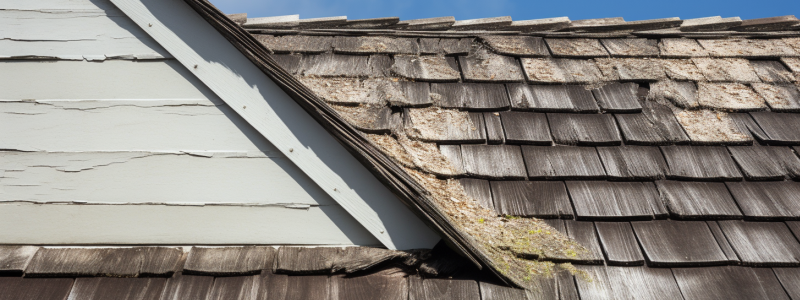
Next Steps with BM Roofing
How to Get in Touch with BM Roofing for Roofing Services
Now that you have acknowledged the importance of regular roof maintenance, you’re ready to take the next step in ensuring the longevity and health of your roof, BM Roofing is here to assist you. You can reach us in several convenient ways:
- Phone: Call us at 303.443.5843 for immediate assistance or to schedule an appointment.
- Website: Visit our website for comprehensive information about our services, customer testimonials, and an online contact form.
Contact BM Roofing today to ensure your roof remains in optimal condition, safeguarding your home or business for years to come. Our team of experts is ready to provide you with the quality service and peace of mind you deserve. We look forward to serving you and keeping your roof in its best possible condition.
Things to Consider When Replacing a Roof
For both homeowners and business owners, the roof serves as a fundamental shield, safeguarding the interior of your property from weather extremes and environmental elements. Its role extends beyond mere protection; a well-maintained roof contributes to energy efficiency, enhances the aesthetic appeal of your property, and plays a significant part in determining its overall value. However, the decision to replace a roof is not one to be taken lightly. In this comprehensive guide, we will explore the key aspects of “Things to consider when replacing a roof.”
This article is tailored for individuals who may not have extensive knowledge about roofing but are facing the need to make this crucial decision. We aim to provide clear, authoritative information that demystifies the process, helping you navigate through the myriad of choices and considerations with confidence.
We will discuss various factors such as understanding your specific roofing needs, choosing the right materials, finding a qualified contractor, budgeting effectively, comprehending the replacement process, and ensuring long-term maintenance and care. Each of these elements plays a vital role in not only ensuring a successful roof replacement but also in securing the longevity and effectiveness of your investment.
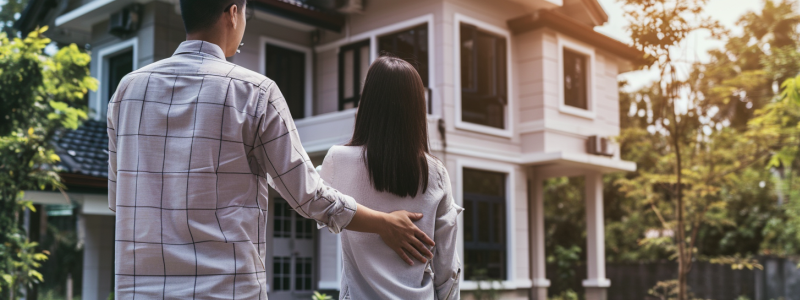
Understanding Your Roofing Needs
When contemplating a roof replacement, the first step is to thoroughly understand your specific roofing needs. This understanding is crucial in ensuring that the new roof not only addresses current issues but also aligns with your long-term requirements. Here are key factors to consider:
- Current Roof Condition: Examine the age and state of your existing roof. Look for signs of wear such as missing shingles, leaks, or frequent repairs. Understanding the extent of damage or deterioration helps in deciding whether a repair or a complete replacement is necessary.
- Climate Considerations: Your local climate plays a significant role in determining the suitable roofing material. For instance, areas with heavy snowfall require a sturdy roof, while hot climates might benefit from reflective roofing materials to enhance energy efficiency.
- Building Use and Requirements: The purpose of your building influences your roofing choice. A commercial building might have different roofing needs compared to a residential property. Consider factors like insulation, load-bearing capacity, and ventilation.
- Aesthetic Preferences: The appearance of your roof impacts the overall look of your property. Consider the architectural style of your building and your personal preferences when selecting materials and designs.
- Future Plans: Think about your long-term plans for the property. If you intend to sell in the near future, you might prioritize curb appeal and resale value. For long-term ownership, durability and maintenance requirements become more important.
By carefully evaluating these aspects, you can gain a clearer understanding of what you need from your new roof. This initial assessment is a critical step in ensuring that your roof replacement aligns with both your immediate needs and future goals, setting the foundation for the subsequent steps in the roof replacement process.
Choosing the Right Materials
The choice of roofing materials is a pivotal decision in the roof replacement process. It affects not only the appearance and durability of your roof but also its cost and maintenance requirements. Here’s a guide to help you navigate through the options:
- Asphalt Shingles:
- Pros: Cost-effective, widely available, and come in various colors and styles.
- Cons: Shorter lifespan compared to some other materials; not as durable in extreme weather conditions.
- Metal Roofing:
- Pros: Long-lasting, energy-efficient, and can withstand severe weather. Ideal for areas with heavy snowfall or high winds.
- Cons: Higher initial cost; installation requires specialized skills.
- Tile Roofing (Clay or Concrete):
- Pros: Extremely durable, fire-resistant, and offers a unique aesthetic appeal.
- Cons: Heavy, requiring strong structural support; more expensive than asphalt.
- Slate Roofing:
- Pros: Offers a distinctive look with excellent durability and a long lifespan.
- Cons: Among the most expensive; heavy and requires a reinforced roof structure.
- Wood Shingles or Shakes:
- Pros: Natural appearance, with some energy-efficient properties.
- Cons: Requires regular maintenance; not ideal in fire-prone areas.
- Synthetic Roofing Materials:
-
- Pros: Can mimic the look of wood, slate, or tile; often lighter and less expensive.
- Cons: Varying quality; newer on the market, so longevity is less proven.
When thinking about “Things to Consider When Replacing a Roof”, and while selecting roofing materials, you should consider factors such as your budget, the climate in your area, the architectural style of your property, and maintenance requirements. It’s also important to think about the long-term implications of your choice, such as the lifespan of the material and any ongoing maintenance needs.
Finding a Qualified Contractor
The selection of a qualified roofing contractor is a crucial step in the roof replacement process. A skilled and reliable contractor ensures that your roof is installed correctly, adhering to safety standards and industry best practices. Here are key points to consider when choosing a roofing contractor:
- Check Credentials and Experience:
- Look for contractors with a solid track record and ample experience in roof replacement.
- Ensure they are licensed and insured, providing protection against accidents or damage.
- Read Reviews and Seek References:
- Check online reviews and ask for references from past clients.
- This step provides insights into the contractor’s reliability, quality of work, and customer service.
- Get Multiple Quotes:
- Obtain quotes from several contractors to compare prices and services.
- Remember, the cheapest option is not always the best. Quality and reliability are paramount.
- Ask About Warranties and Guarantees:
- Inquire about the warranties offered on both materials and workmanship.
- A good contractor stands behind their work with substantial warranties.
- Communication is Key:
- Choose a contractor who communicates clearly and promptly.
- Good communication throughout the project is essential for a smooth process.
- Local Knowledge and Compliance:
- A local contractor will be familiar with regional weather conditions and building codes.
- They can provide tailored advice and ensure compliance with local regulations.
Selecting the right contractor is a significant aspect of “Things to consider when replacing a roof.” A competent contractor not only brings expertise to your project but also peace of mind, knowing that your investment is in good hands. Take the time to research and choose a contractor who meets these criteria to ensure a successful and satisfactory roof replacement experience.

Budgeting for Your Roof Replacement
Budgeting effectively for a roof replacement is a critical component of the project. It involves understanding the costs and planning your finances to ensure the project is both affordable and of high quality. Here are essential points to consider for budgeting:
- Understand the Cost Factors:
- Roof size, material choice, labor, and any additional repairs or structural changes significantly influence the overall cost.
- Be aware that higher-quality materials and experienced labor might cost more upfront but can offer better longevity and value.
- Get Detailed Estimates:
- Obtain itemized estimates from contractors to understand where your money is going.
- This transparency helps in comparing quotes and ensuring you are paying for necessary services.
- Plan for Unexpected Expenses:
- Set aside a contingency fund, typically 10-20% of the project cost, for unforeseen issues like structural repairs.
- Roof replacements can reveal hidden problems that need addressing.
- Explore Financing Options:
- If paying upfront is challenging, consider financing options like loans or payment plans offered by contractors.
- Research and compare different financing options to find one that suits your financial situation.
- Consider Long-term Savings:
- Investing in energy-efficient materials or durable roofing can lead to long-term savings through reduced energy bills and maintenance costs.
- Evaluate the long-term financial benefits alongside the initial investment.
- Check for Rebates and Incentives:
- Some regions offer rebates, tax credits, or incentives for using certain materials or for energy-efficient upgrades.
- Research local programs that might help offset some of the costs.
A well-planned budget ensures that you can afford a quality roof replacement without financial strain. It also helps in making informed decisions about materials and contractors, balancing cost with quality and long-term benefits. By carefully planning your finances, you can invest in a roof that not only protects your property but also adds value to it.
Long-term Maintenance and Care
After successfully replacing your roof, it’s important to focus on long-term maintenance and care to ensure its longevity and optimal performance. Regular maintenance not only extends the life of your roof but also helps in identifying potential issues before they become major problems. Here are key strategies for maintaining your new roof:
- Regular Inspections:
- Schedule professional inspections at least once a year, ideally after severe weather seasons.
- Regular inspections help in detecting minor damages or wear and can prevent costly repairs.
- Keep the Roof Clean:
- Remove debris like leaves, branches, and dirt that can accumulate over time.
- Debris can trap moisture, leading to rot or mold, and can block drainage systems.
- Gutter Maintenance:
- Keep gutters and downspouts clean and clear of obstructions.
- Properly functioning gutters are essential for water drainage and preventing water damage.
- Monitor for Damage:
- Be vigilant for signs of damage, such as missing or broken shingles, leaks, or cracks.
- Early detection and repair of these issues can prevent more extensive damage.
- Trim Overhanging Tree Branches:
- Regularly trim branches that hang over your roof.
- This reduces the risk of damage from falling branches and minimizes debris accumulation.
- Ventilation and Insulation:
- Ensure your attic is well-ventilated and properly insulated.
- Good ventilation and insulation prevent heat and moisture buildup, which can damage your roof over time.
- Address Issues Promptly:
- If you notice any problems, address them promptly to prevent further damage.
- Delaying repairs can lead to more extensive and expensive issues.
By investing time and resources in regular maintenance, you can protect your investment and ensure that your roof remains in excellent condition for years to come. A well-maintained roof not only provides security and protection but also adds to the aesthetic and functional value of your property.
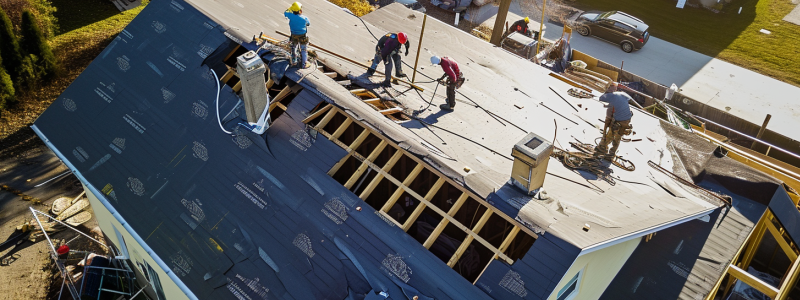
Ready to Start Your Roof Replacement Journey?
If you’re pondering over the topic of “Things to Consider When Replacing a Roof”, consider reaching out to expert guidance, B&M Roofing is here to help. With our team of experienced professionals, we ensure a seamless and high-quality roof replacement experience. Visit B&M Roofing today to schedule a consultation and take the first step towards a durable, aesthetically pleasing, and long-lasting roof for your property.
Does a New Roof Increase Home Value
For homeowners and business owners, the decision to invest in property improvements often comes with a mix of practical and financial considerations. One of the most significant aspects of any property is its roofing. A common and crucial question arises in this context: Does a new roof increase home value? This article is designed to address this query, providing clear, authoritative, and informative insights, particularly for those who may not have an in-depth understanding of roofing and its implications.
Whether you are considering a roofing upgrade or simply seeking to understand the value it can add to your property, this article aims to equip you with the necessary information to make informed decisions. Let’s embark on this journey to uncover the true impact of a new roof on home value.

The Impact of a New Roof on Home Value
When considering home improvements, the question of value addition is paramount. Specifically, homeowners and business owners often ponder, “Does a new roof increase home value?” The answer is multifaceted, encompassing various aspects from market appeal to functional upgrades.
Enhanced Market Value
- Immediate Curb Appeal: A new roof dramatically improves the appearance of your property. This visual enhancement is crucial when it comes to first impressions, especially in the real estate market. A well-designed, modern roof can transform the look of an older home, making it more appealing to potential buyers.
- Energy Efficiency: Modern roofing materials are often designed to be more energy-efficient. This means they can help keep your home cooler in summer and warmer in winter, leading to lower energy bills. This efficiency is not only a selling point but also adds tangible value to your property.
- Insurance Advantages: Newer roofs are less likely to have issues, which can lead to lower homeowners’ insurance premiums. Insurance companies often recognize the reduced risk of damage with a new roof, translating into financial savings for the homeowner.
Expert Opinions and Market Data
- Real Estate Insights: Real estate experts consistently highlight the importance of a new roof in property valuation. A new roof is frequently listed as one of the top factors influencing home sales, reassuring potential buyers of fewer immediate maintenance concerns.
- Return on Investment (ROI): According to industry studies, the ROI of a new roof can be significant. While the exact figures vary, homeowners can expect to recover a substantial portion of the roofing cost through increased home value. This ROI makes roofing upgrades one of the more financially sound home improvement projects.
Durability and Longevity
- Long-Term Benefits: New roofing technologies not only enhance the aesthetic appeal but are also built to last longer. This longevity means less frequent replacements and repairs, a factor that is highly attractive to potential buyers who are often looking for homes that won’t require immediate maintenance work.
Aesthetic and Functional Benefits of a New Roof
While the primary question, “Does a new roof increase home value?” focuses on financial aspects, it’s equally important to consider the aesthetic and functional benefits a new roof provides. These elements play a crucial role in enhancing both the appeal and the efficiency of a property.
Aesthetic Improvements
- Modern Look: A new roof can significantly modernize the appearance of your home. With a variety of materials and colors available, it can complement your home’s architectural style and increase its curb appeal.
- Uniformity and Symmetry: Over time, older roofs can develop inconsistencies in color and texture. A new roof offers a uniform, cohesive look, which is visually pleasing and suggests meticulous maintenance.
Functional Advantages
- Enhanced Insulation: Modern roofing materials are often designed with better insulation properties. This means improved temperature regulation inside the home, leading to a more comfortable living environment and reduced energy costs.
- Leak Prevention: One of the most practical benefits of a new roof is its ability to prevent leaks. Water damage can be costly and harmful to both the structure of your home and the health of its inhabitants. A new roof ensures a watertight barrier against the elements.
- Improved Ventilation: Proper roof ventilation is crucial for regulating temperature and moisture levels in the attic. A new roof can provide better ventilation, preventing issues like mold growth and wood rot.
Technological Advancements
- Innovative Materials: The roofing industry has seen significant technological advancements. New materials offer enhanced durability, better environmental sustainability, and even integrated solar technology.
- Customization Options: Today’s roofing materials come in a wide range of styles and colors, allowing homeowners to customize their roof to match their personal taste and the architectural style of their home.
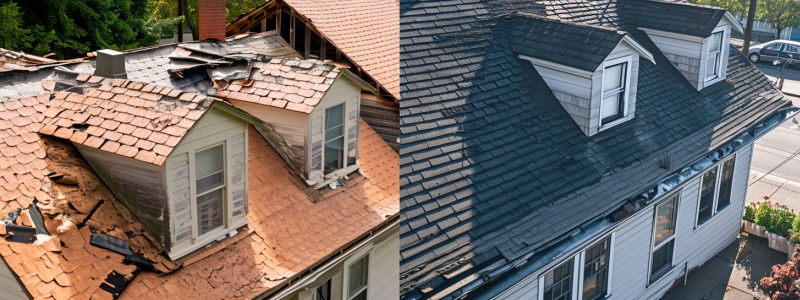
Buyer Perception and Market Trends
Understanding how a new roof influences buyer perception and aligns with current market trends is essential in answering the question, “Does a new roof increase home value?” This section delves into the psychological impact a new roof has on potential buyers and how it reflects broader trends in the real estate market.
Influencing Buyer Perception
- Sense of Security: A new roof offers potential buyers a sense of security, knowing that they are unlikely to face immediate roofing issues or expenses. This peace of mind can be a decisive factor in the home-buying process.
- Perceived Maintenance: Homes with new roofs are often perceived as better maintained overall. This perception can extend to other areas of the home, creating a general impression of care and attention to detail.
- Ready to Move In: Many buyers prefer homes that don’t require immediate work. A new roof enhances the ‘move-in ready’ appeal of a property, making it more attractive to those looking for a hassle-free purchase.
Reflecting Market Trends
- Eco-Friendly Choices: With a growing emphasis on sustainability, eco-friendly roofing materials are becoming increasingly popular. Homes with roofs that boast energy-efficient features or environmentally friendly materials are often more appealing in today’s market.
- Technological Integration: The integration of technology, such as solar panels, into roofing materials is a trend gaining momentum. Properties that embrace these advancements can stand out in the market, attracting buyers interested in modern, energy-efficient homes.
- Resilience in Weather Conditions: In areas prone to extreme weather, roofs designed to withstand such conditions are highly valued. This resilience can be a significant selling point, reflecting a trend towards more durable and long-lasting home features.
Market Data Insights
- Comparative Market Analysis (CMA): Real estate agents often use CMAs to evaluate home values. Properties with new roofs typically fare better in these analyses, as they compare favorably against similar properties with older roofing.
- Home Inspection Reports: A new roof can positively influence home inspection reports, a critical component in the home buying and selling process. Favorable inspection results can lead to smoother transactions and potentially higher sale prices.
Long-Term Investment and Cost-Benefit Analysis
In addressing the question, “Does a new roof increase home value?” it’s crucial to consider the long-term investment perspective and conduct a cost-benefit analysis. This section focuses on the financial implications of installing a new roof, weighing the initial costs against the potential long-term gains.
Long-Term Financial Benefits
- Increased Property Value: As previously discussed, a new roof can significantly boost your home’s market value. This increase often surpasses the initial investment, especially in competitive real estate markets.
- Energy Savings: The improved insulation and energy efficiency of modern roofing materials can lead to substantial savings on utility bills over time. These savings contribute to the overall financial benefits of a new roof.
- Reduced Maintenance Costs: A new roof, particularly one with advanced materials and technology, often requires less maintenance. This reduction in upkeep expenses over the years can add up to considerable savings.
Cost-Benefit Analysis
- Initial Investment: The upfront cost of a new roof varies depending on the size of the property, the materials chosen, and labor costs. It’s important to get multiple quotes and consider different material options to find the best balance between cost and quality.
- Return on Investment (ROI): While the ROI can vary, homeowners can generally expect a significant percentage of the roofing cost to be recouped in home value. The exact ROI depends on factors like the local real estate market and the quality of the roofing installation.
- Insurance Premium Reductions: As mentioned earlier, a new roof can lead to lower home insurance premiums due to the decreased risk of damage. This reduction should be factored into the overall cost-benefit analysis.
Considering Financing Options
- Loans and Credits: Homeowners may consider various financing options, such as home improvement loans or lines of credit, to manage the cost of a new roof. Some regions also offer special programs or credits for energy-efficient home improvements.
- Long-Term Perspective: When evaluating financing options, it’s important to consider the long-term implications and ensure that the investment aligns with your financial planning.
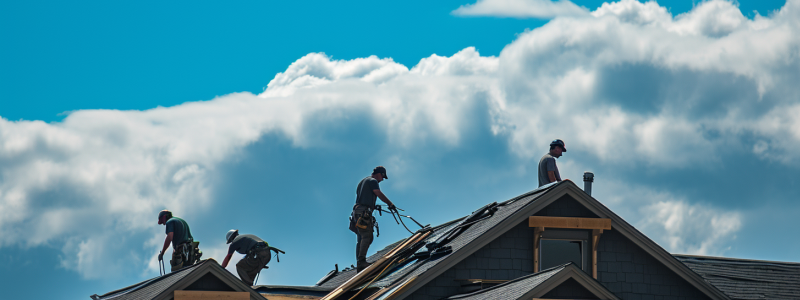
Last Words
In conclusion, for homeowners and business owners, investing in a new roof is a decision that goes beyond mere aesthetic enhancement. It is a strategic move that can significantly boost the value and functionality of your property.
Visit B&M Roofing Contractors to discover how we can transform your property. Our team of experienced professionals is dedicated to providing top-quality roofing solutions that not only enhance the aesthetic appeal of your home but also significantly increase its market value. Whether you’re looking for modern, energy-efficient roofing options or just need reliable, long-lasting materials, we have you covered. Get in touch with us today for a personalized quote and start your journey towards a smarter, more valuable home investment with BM Roofing Contractors. Your home deserves the best – let us help you achieve it.
Average Roof Life
Welcome to the world of roofing, where understanding the ‘average roof life’ is not just about numbers—it’s about peace of mind for your home or business in Colorado. The term ‘average roof life’ refers to the typical duration a roof can be expected to last before it needs significant repair or replacement. This is more than just a statistic; it’s a crucial piece of knowledge that safeguards your property against the elements and helps you plan for the future.
Why is knowing about roof lifespan so important? For starters, it’s a key factor in maintaining the safety, aesthetics, and value of your property. A well-maintained roof is like a trusty helmet for your home—it’s the first line of defense against snow, rain, and the bright Colorado sun. Plus, being aware of your roof’s lifespan helps you budget for repairs or replacement, avoiding the sticker shock that can come with sudden roofing emergencies.
In Colorado’s dynamic climate, where the weather can be as unpredictable as a Broncos game, understanding the average life of your roof is particularly vital. It’s not just about enduring the present; it’s about being prepared for the future. So, let’s embark on this journey to uncover the mysteries of roof longevity and ensure that the only thing going over your head is a roof that’s built to last.
Remember, a solid roof overhead is not just a part of your building; it’s the guardian of your peace of mind. And that’s a responsibility we take as seriously as you do.
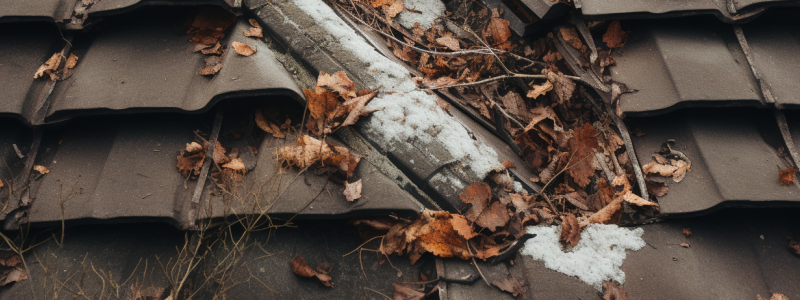
Factors Affecting Roof Life
When it comes to the longevity of your roof, several key factors come into play, especially in a place like Denver or Arvada, where the weather can be as varied as the landscape. Let’s break down these elements:
- Climate: Colorado’s unique climate, characterized by its dry air, high elevation, and sudden temperature shifts, can take a toll on roofing materials. The intense UV exposure at high altitudes can degrade roofing materials more quickly than in other regions.
- Material Quality: The quality of the materials used in your roof is non-negotiable. Higher quality materials may come with a steeper price tag, but they often translate to a longer lifespan for your roof.
- Installation: A roof is only as good as its installation. Properly installed roofs can withstand Denver’s unpredictable weather patterns much better than those that are not.
- Maintenance: Regular maintenance is the key to longevity. This includes inspections, prompt repairs, and cleaning. Neglect can lead to premature aging of your roof.
- Other Factors: These include the roof design, the color of the roofing materials (darker colors absorb more heat), ventilation, and insulation quality.
For Denver homeowners, understanding these factors is crucial. According to a local roofing expert, roofs in Colorado can last between fifteen and thirty years, but this range can vary widely based on the factors mentioned above. It’s a testament to the importance of not just the materials chosen, but also the quality of installation and ongoing maintenance.
Remember, while the initial cost is an important consideration, the longevity and performance of your roof in Denver’s climate are what truly determine its value over time. Investing in quality materials and workmanship now can save you from costly repairs or replacements down the line.
Types of Roofing Materials and Their Lifespan
Choosing the right roofing material is a decision that homeowners in Denver will live with for decades. Each material comes with its own average roof life expectancy, and here’s a comparison to help you weigh your options:
- Composite Asphalt Shingles: These are among the most common roofing materials due to their cost-effectiveness and ease of installation. They can last anywhere from 15 to 40 years, with the lifespan varying based on the quality of the materials and maintenance.
- Architectural Shingles: A step up from the standard asphalt shingle, architectural shingles offer a longer lifespan of 30 to 50 years due to their durability and quality.
- Clay Tiles: Known for their classic aesthetic and durability, clay tiles can last over 50 years. They are excellent for weather resistance, which is a significant consideration in Denver’s climate.
- Metal Roofing: Metal roofs are becoming increasingly popular due to their longevity and resistance to extreme weather. A well-installed metal roof can last 40 to 70 years.
- Slate Roofing: Slate is one of the longest-lasting roofing materials, with a lifespan that can exceed 100 years. It’s a premium choice that offers both durability and timeless beauty.
- Wood Shingles: While offering a natural look, wood shingles have a shorter lifespan of about 20 to 30 years and require more maintenance, especially in areas prone to moisture and wildfire.
For a detailed comparison, some sources offer excellent guides on the best roofing materials for longevity, providing homeowners with a comprehensive look at how different materials stack up against each other.
When selecting roofing materials, consider not only the initial cost but also the long-term benefits. A roof that may cost more upfront could offer significant savings over time due to its extended lifespan and reduced maintenance needs.
The Financial Aspect
Investing in your roof is investing in the future of your home or business. Understanding the cost implications of roof maintenance and replacement is crucial for effective budgeting and financial planning. Here’s what you need to know:
- Maintenance Costs: Regular maintenance is essential for extending the average roof life and can prevent costly repairs down the line. Minor repairs, such as fixing leaks or replacing damaged shingles, can range from $150 to $400 on average. However, neglecting these issues can lead to more significant problems, which are far more expensive to address.
- Replacement Costs: When a roof reaches the end of its average lifespan, replacement becomes necessary. According to Forbes, the cost for roof replacement can vary widely, with averages ranging from $5,700 to $12,500. Factors influencing this cost include the size of the roof, the materials chosen, and the complexity of the installation.
- Long-Term Savings: While the upfront costs of high-quality materials and professional installation may be higher, they can lead to long-term savings by reducing the need for frequent repairs or premature replacement.
- Insurance Considerations: Some insurance policies may cover part of the cost of roof repairs or replacement, especially if the damage is due to a covered event. It’s wise to review your policy and understand what is and isn’t covered.
- Value Increase: A new or well-maintained roof can increase the value of your property. It’s an investment that not only protects your property but also contributes to its market appeal.
Budgeting for roof maintenance and understanding the financial implications of roof repair and replacement are essential for any property owner. By staying proactive with regular inspections and timely repairs, you can manage these costs effectively and ensure your roof remains in top condition for years to come.

Warning Signs and Maintenance Tips
Your roof is speaking to you, and it pays to listen. Recognizing the warning signs that your roof needs attention can save you from costly repairs or even a full replacement. Here are some signs to watch for and maintenance tips to keep your roof in top shape:
Warning Signs
- Sagging Roof: This is a clear indicator that there’s structural damage that needs immediate attention.
- Water Leaks: If you notice water stains on your ceilings or walls, it’s time to inspect your roof for leaks.
- Damaged Shingles: Look out for shingles that are cracked, buckling, or missing entirely.
- Blocked Gutters: Gutters clogged with shingle granules are a sign of roof wear.
- High Energy Bills: Unexpected increases in your energy bills could be due to poor roof insulation or ventilation.
Maintenance Tips
- Regular Inspections: Conduct or schedule a professional roof inspection at least once a year.
- Clean Your Roof: Remove debris, such as leaves and branches, which can retain moisture and rot your roof.
- Trim Overhanging Branches: This prevents damage from fallen limbs and reduces debris accumulation.
- Ensure Proper Ventilation: Adequate attic ventilation is critical to prevent moisture buildup and heat accumulation.
- Address Repairs Promptly: Don’t delay fixing identified issues; small problems can quickly become big ones.
Always search for valuable tips to extend your roof’s lifespan and ensure it continues to protect your home effectively. Remember, proactive maintenance is the most cost-effective way to manage your roof’s health.
When to Consider Replacement
Deciding when to replace your roof is a significant decision that can impact both the safety and the financial well-being of your home. Here are some considerations to help you determine the right time for a roof replacement:
- Age of the Roof: The average roof life varies by material, but if your asphalt shingle roof is over 20 years old, it might be time to consider a replacement.
- Widespread Damage: If you’re facing extensive damage, such as widespread leaks or numerous missing shingles, a repair might not suffice.
- Sagging: This is a serious sign of structural issues, possibly due to long-term water damage or structural failure.
- Moss and Algae Growth: While some growth can be cleaned, excessive moss or algae can indicate moisture problems that may require a roof replacement.
- Energy Inefficiency: If your energy bills are rising without a clear reason, your roof might be the culprit due to poor insulation or ventilation.
Roof replacement is a considerable investment, and it’s essential to make this decision based on a thorough inspection and consultation with roofing professionals.
Choosing the Right Roofing Service
Selecting the right roofing contractor is as crucial as choosing the best roofing material. Here are some tips to ensure you partner with a professional who will do the job right:
- Research Credentials: Look for contractors with a solid track record, proper licensing, and insurance. This protects you against any mishaps during the roofing process.
- Check References and Reviews: A reputable contractor should have a list of references. Additionally, online reviews can provide insight into their work ethic and customer satisfaction.
- Get Detailed Estimates: A professional roofer should provide a detailed estimate, including the scope of work, the materials to be used, and the timeline for completion.
- Communication is Key: Choose a contractor who communicates clearly and promptly. You want someone who will keep you informed throughout the process.
- Warranty Offers: Ensure the contractor offers a warranty not only on the materials but also on their workmanship.
A good roofing contractor is not just a service provider but a partner in maintaining the integrity and longevity of your roof. Take the time to choose wisely, and you’ll be rewarded with a roof that stands the test of time.
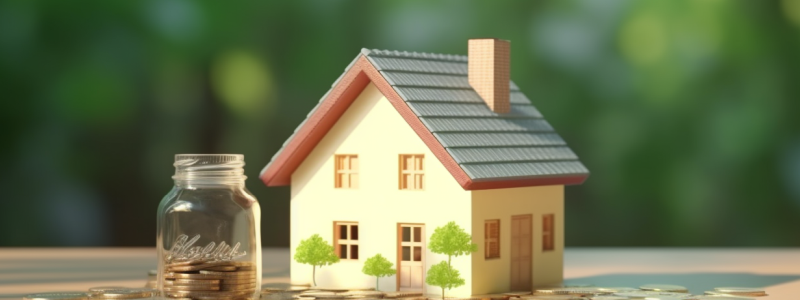
Always Ask the Professionals
As we’ve journeyed through the ins and outs of ‘average roof life,’ it’s clear that the roof over your head is more than just a structural feature—it’s a long-term investment in the safety and security of your Denver property. From understanding the factors that affect roof lifespan to recognizing when it’s time for a replacement, we’ve covered the essential knowledge you need to make informed decisions about your roofing needs.
Here are the key takeaways:
- Knowledge is Power: Knowing the average lifespan of your roofing material and the factors that affect it can help you plan and budget for future maintenance and replacements.
- Maintenance Matters: Regular inspections and upkeep are crucial in extending the life of your roof and preventing minor issues from becoming major expenses.
- Quality Counts: Investing in high-quality materials and professional installation pays off in the long run, potentially saving you money and hassle.
- Professional Partnerships: Choosing the right roofing service is about more than just finding someone to do the job—it’s about finding a partner who will ensure the longevity and durability of your roof.
As you consider the future of your roof, remember that proactive steps taken today can prevent costly repairs tomorrow. Whether you’re scheduling routine maintenance or facing the prospect of a full replacement, approach each decision with the confidence that comes from being well-informed. Take action today by scheduling a professional inspection or consultation with B&M Roofing of Colorado to assess the health of your roof.





































